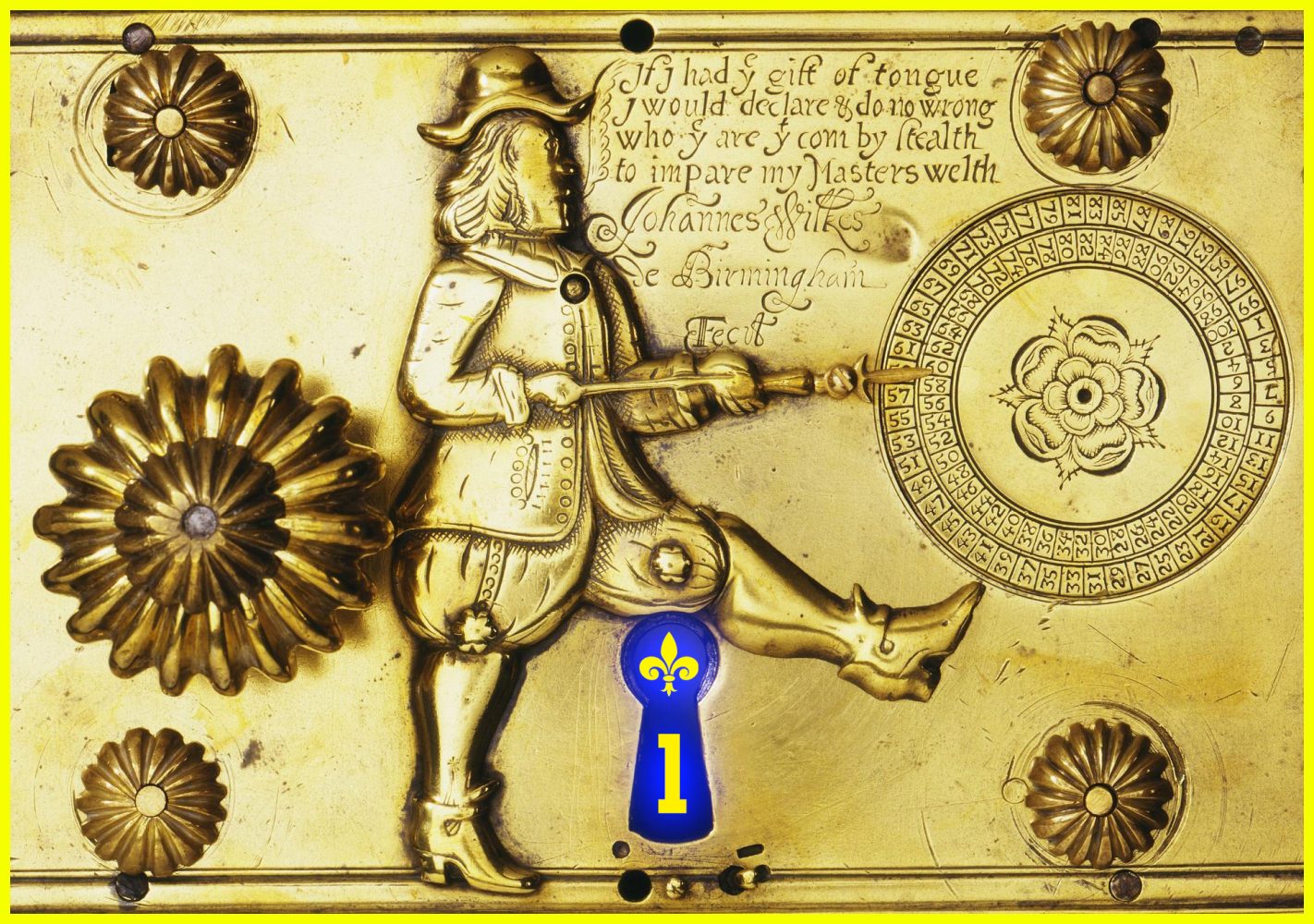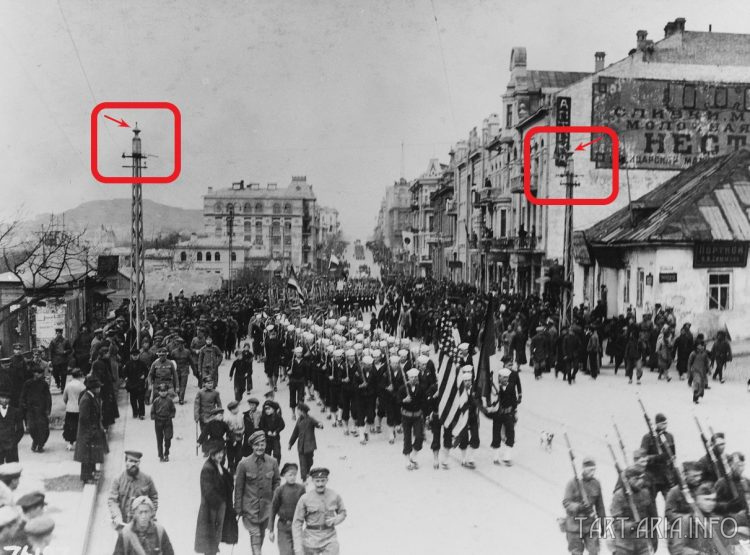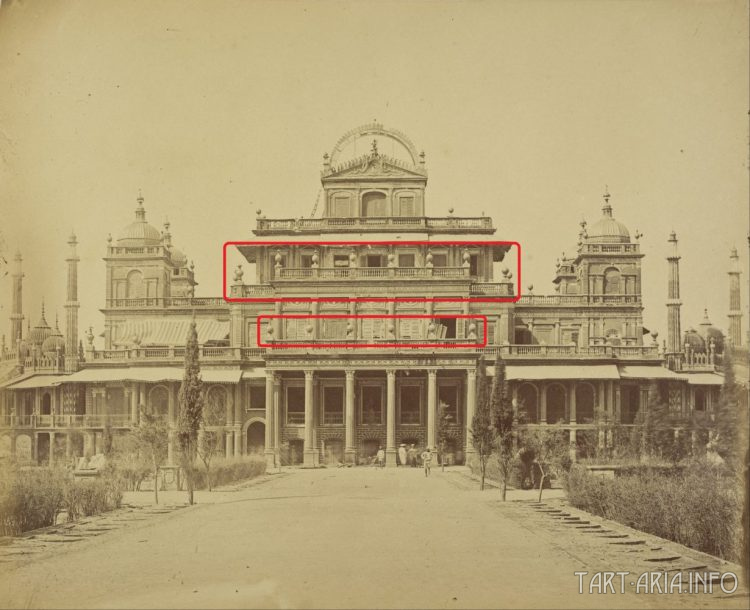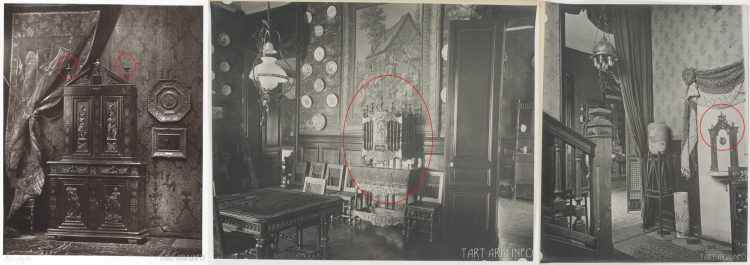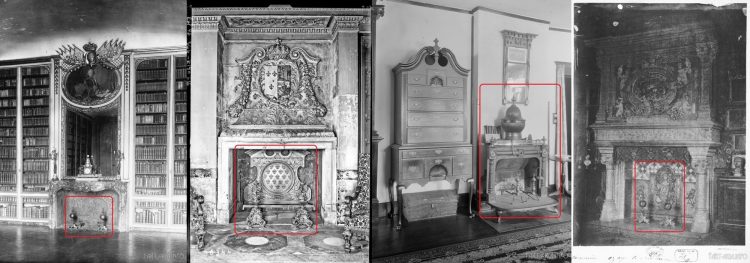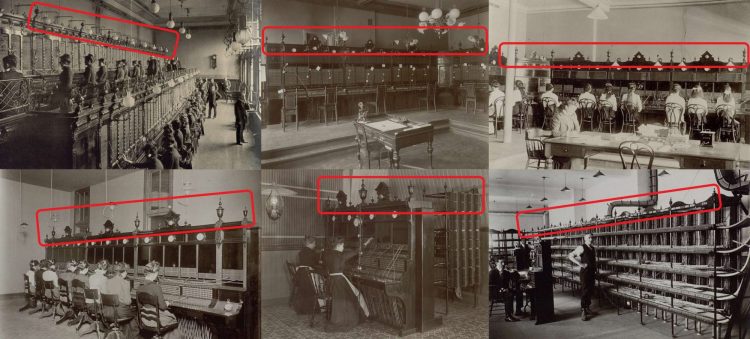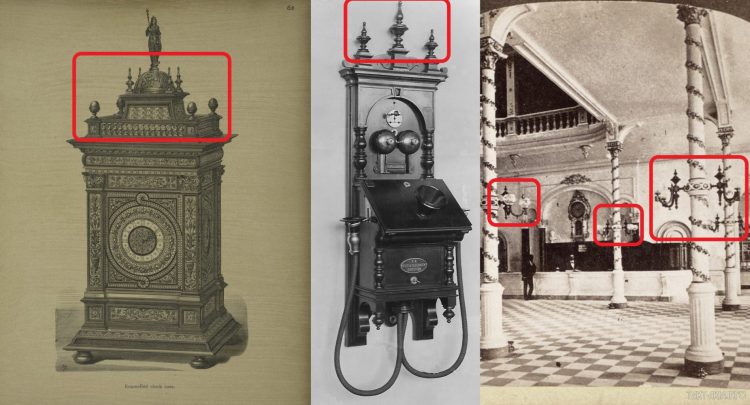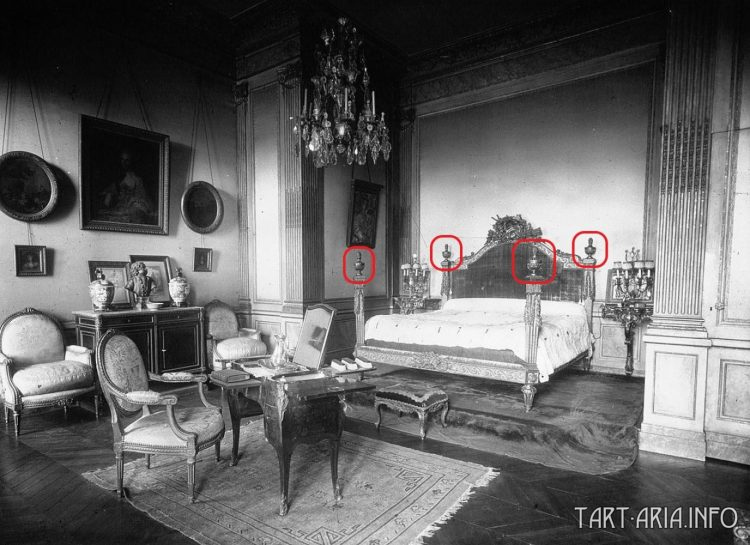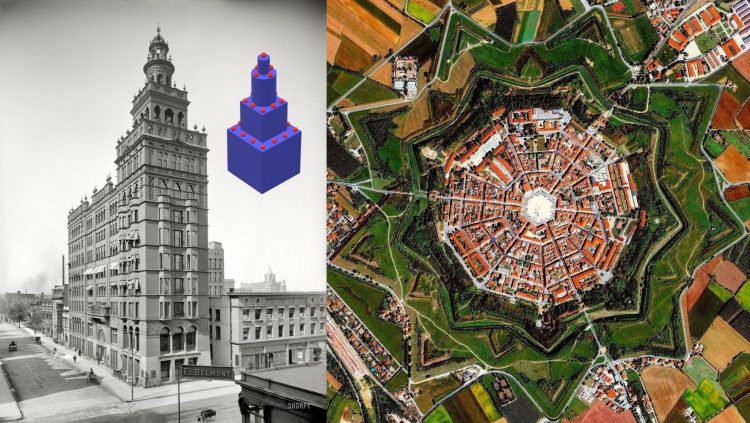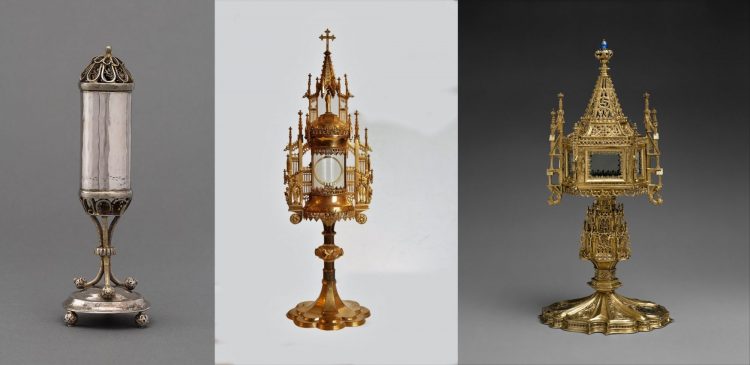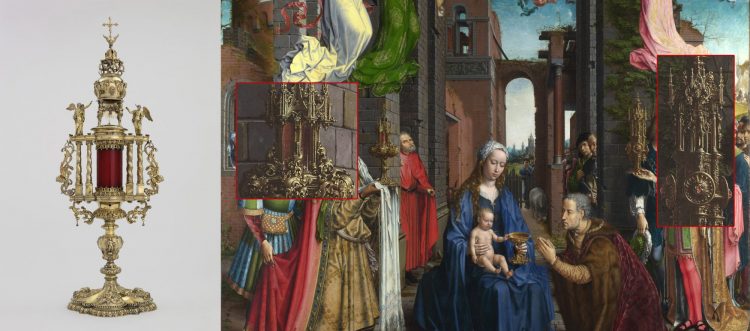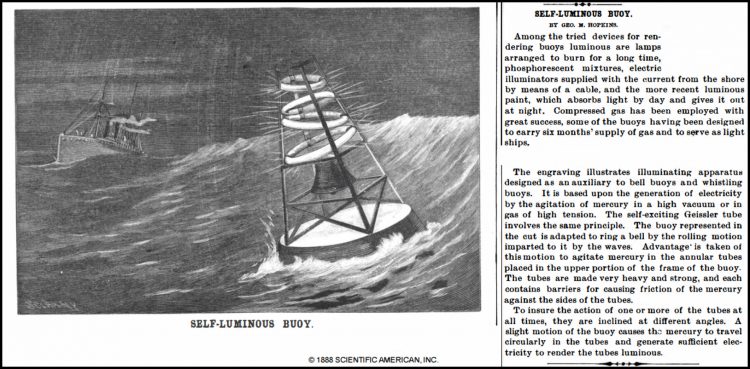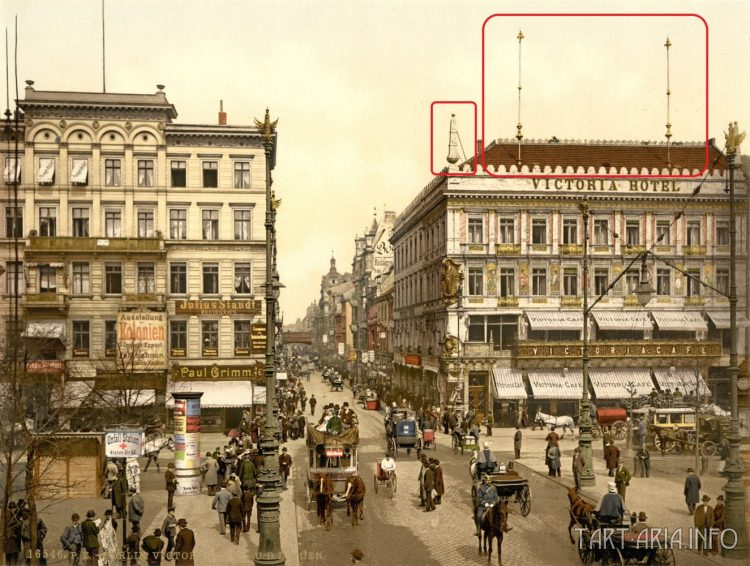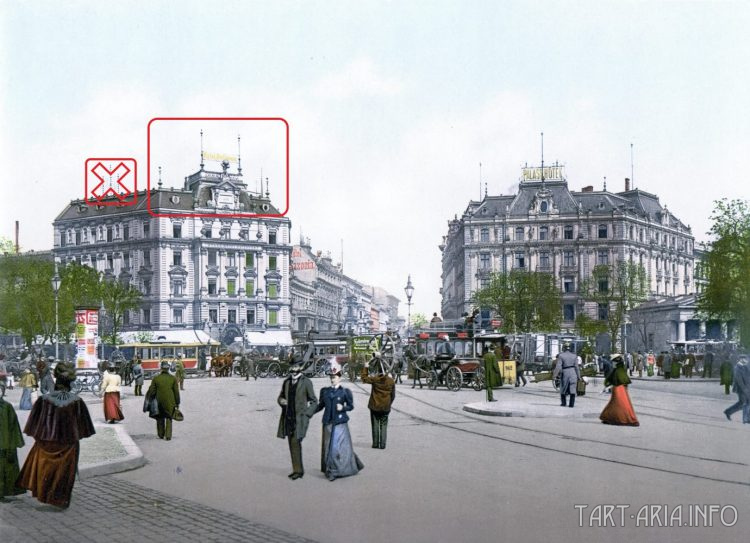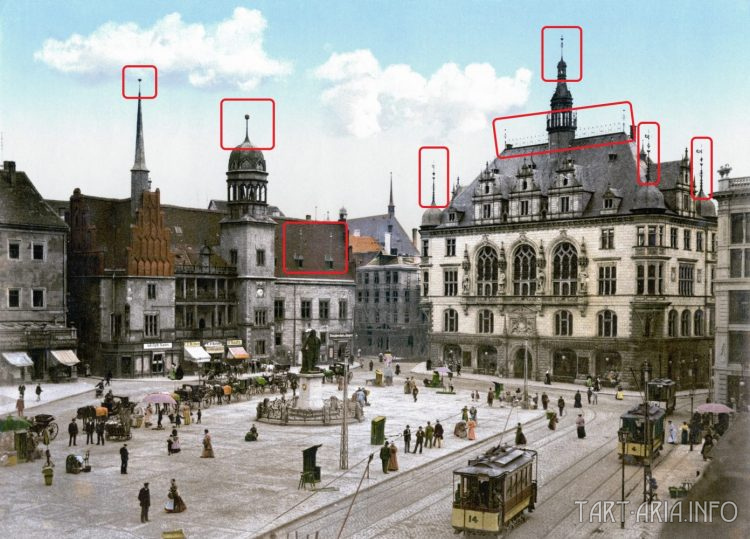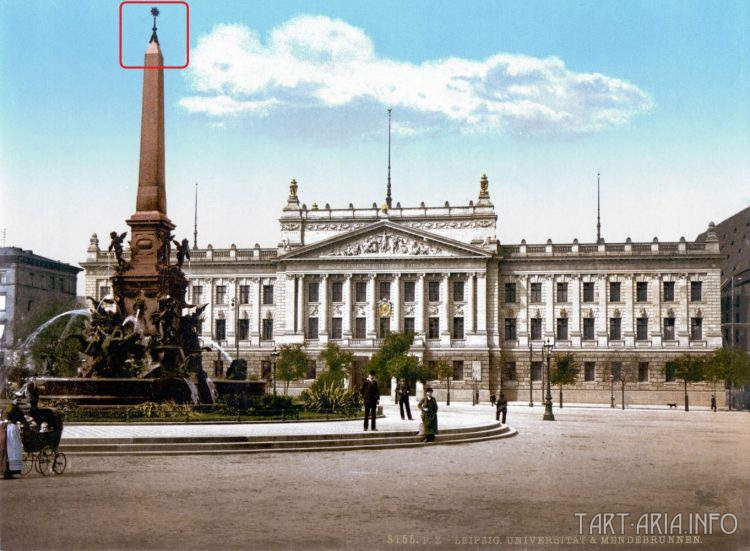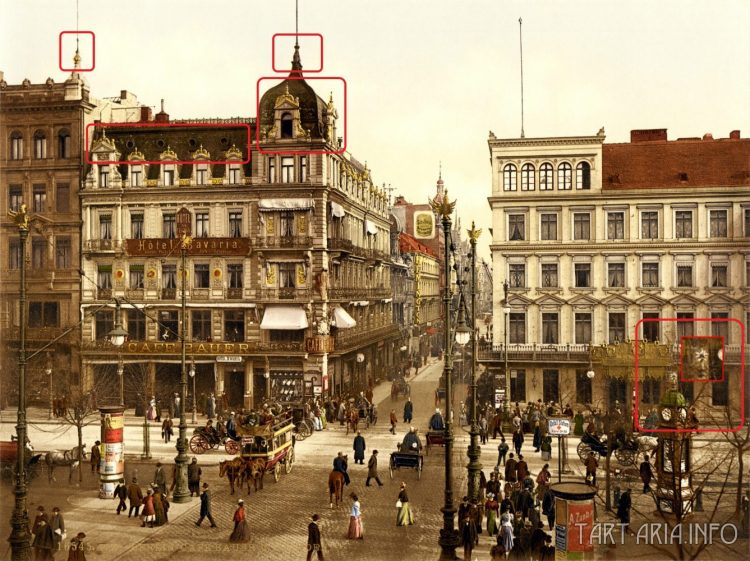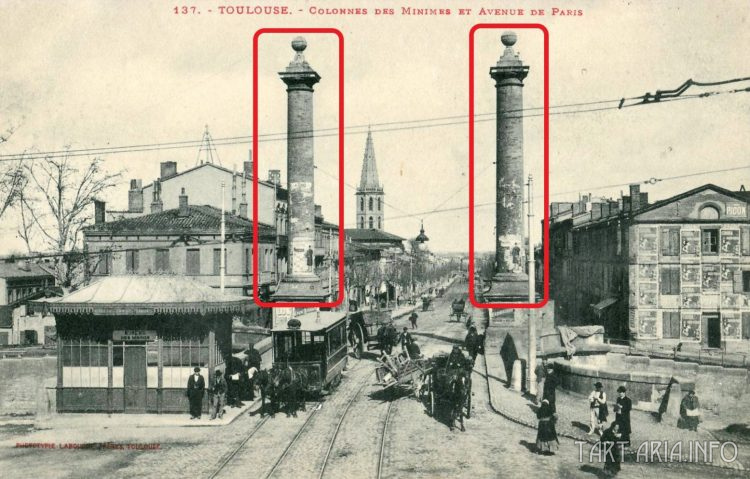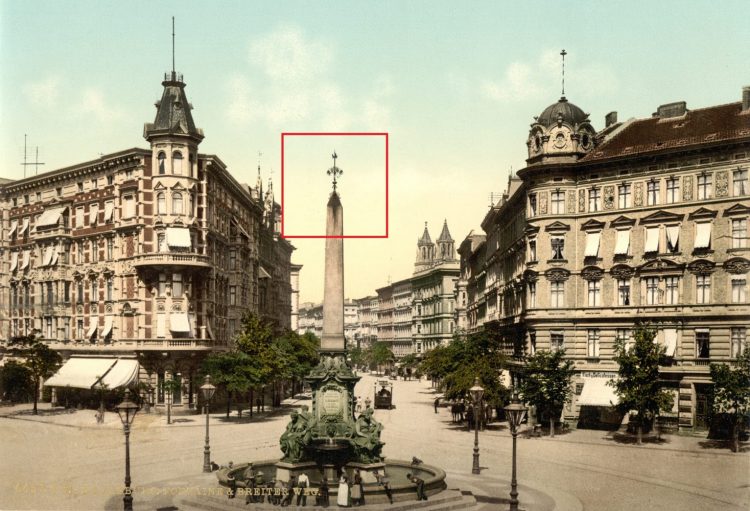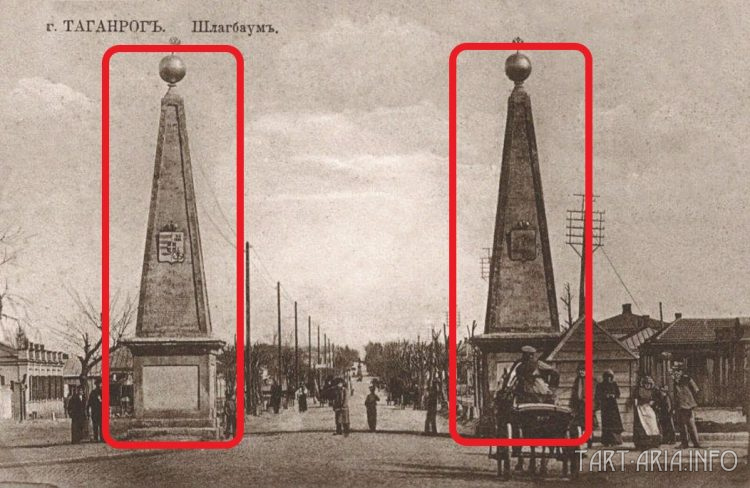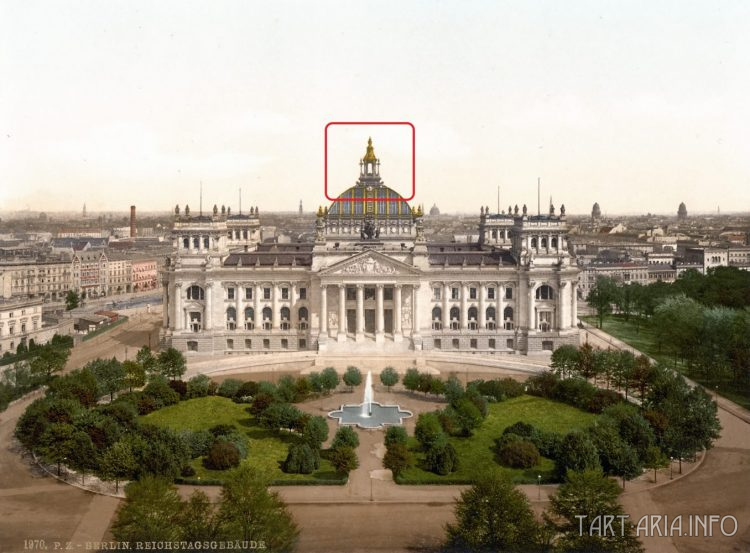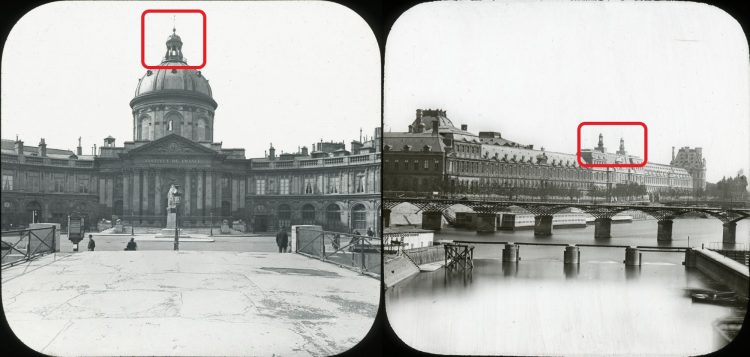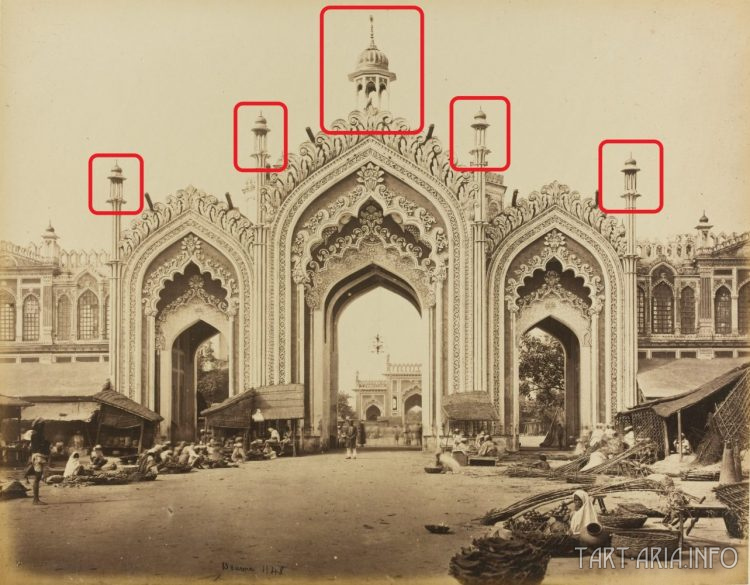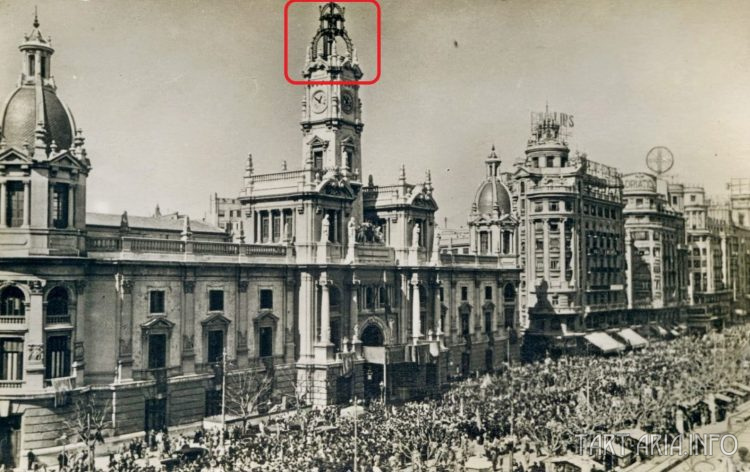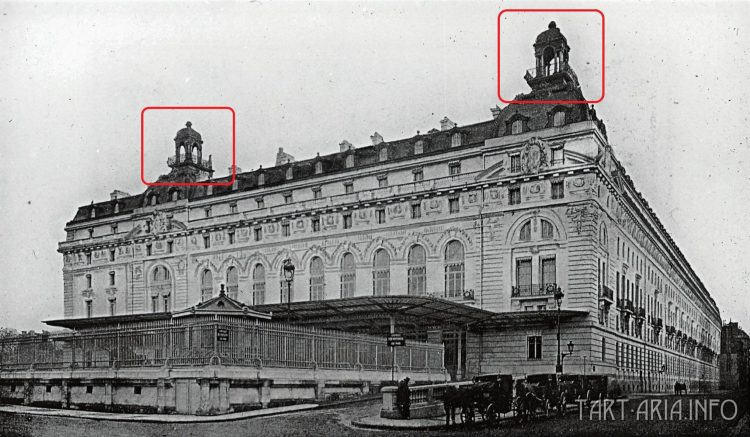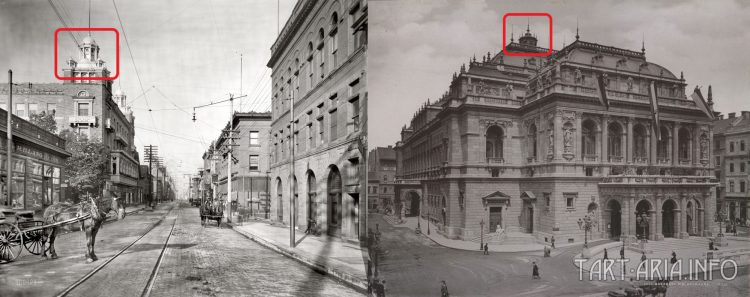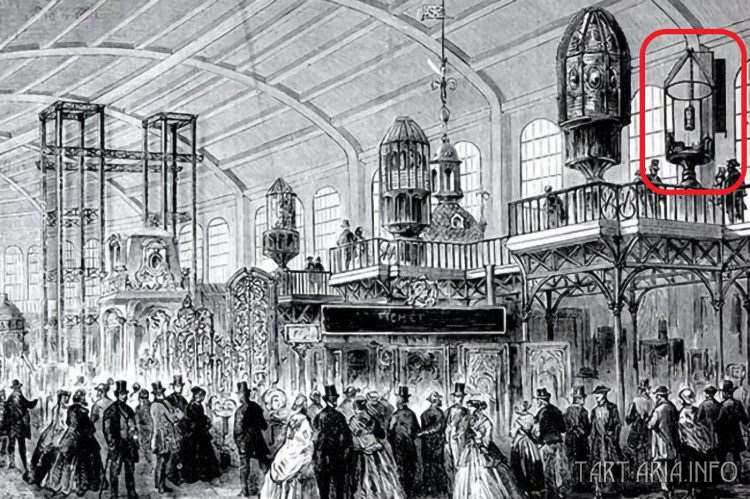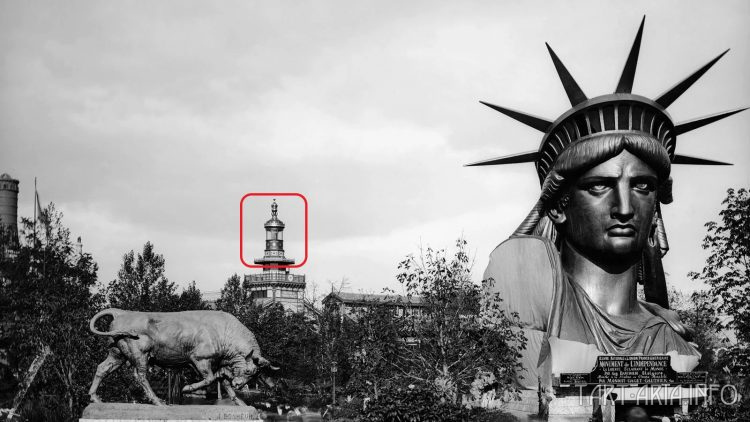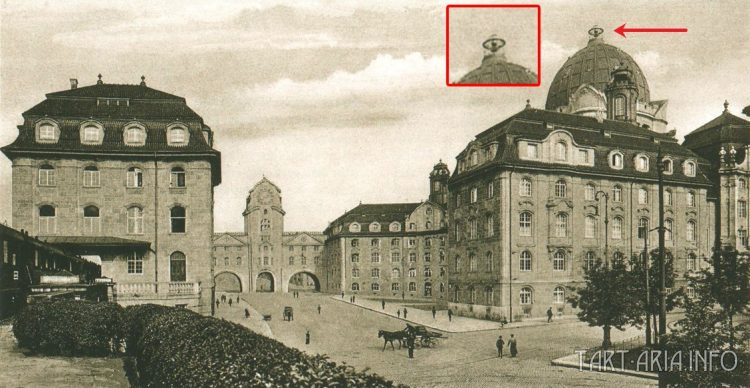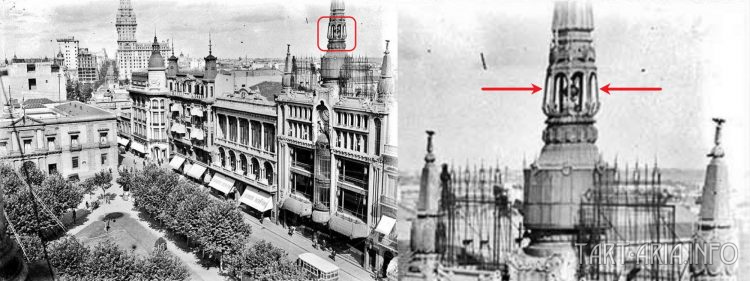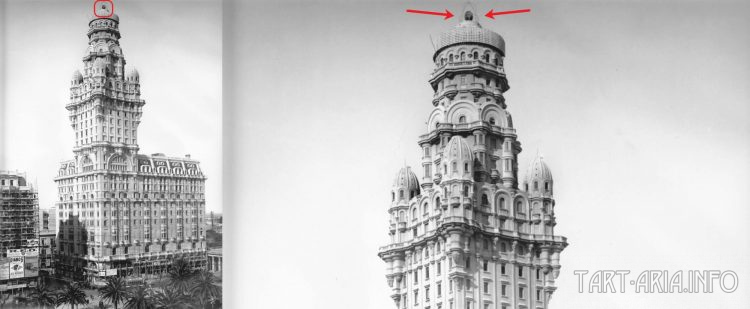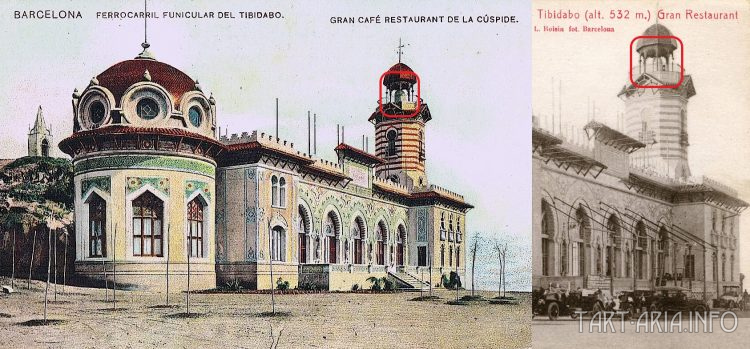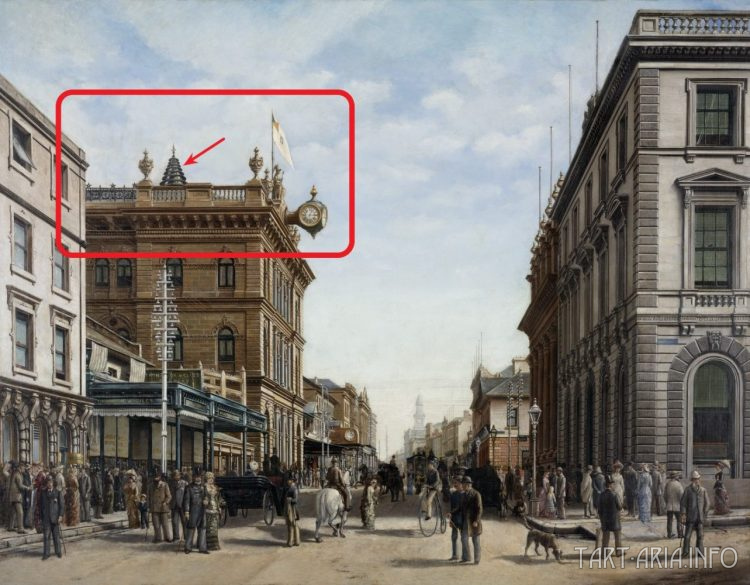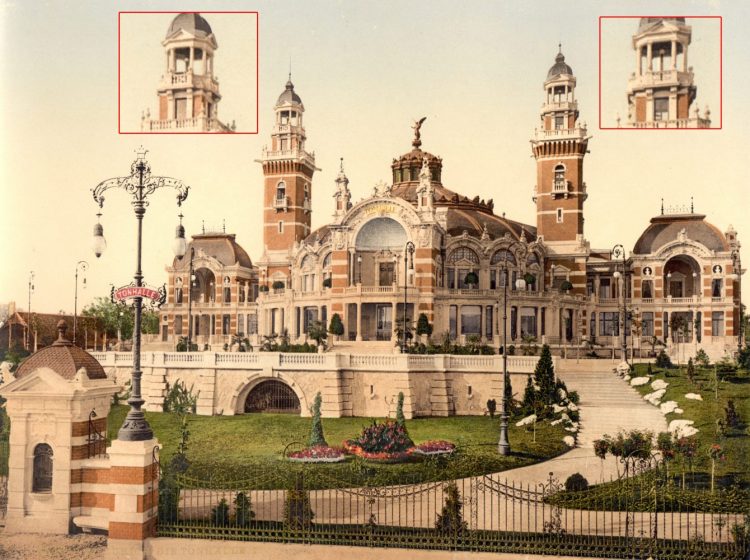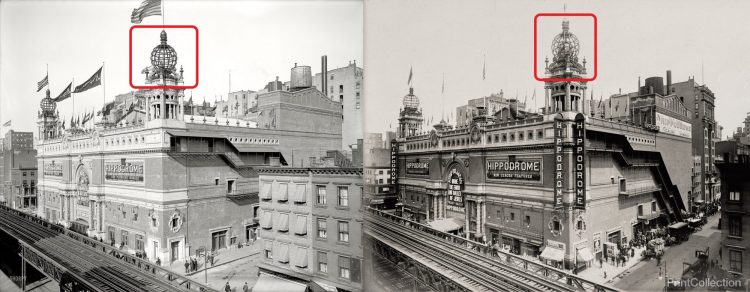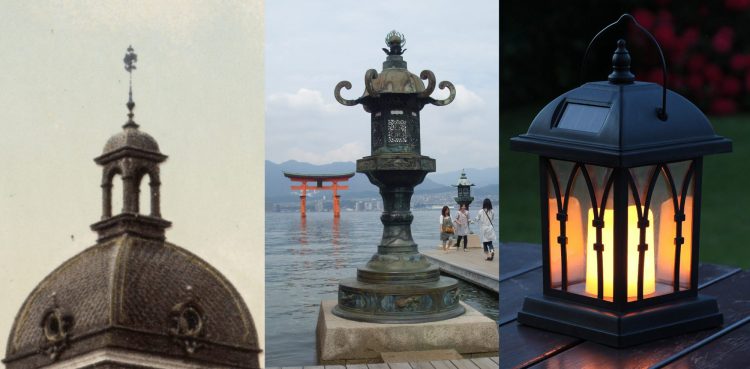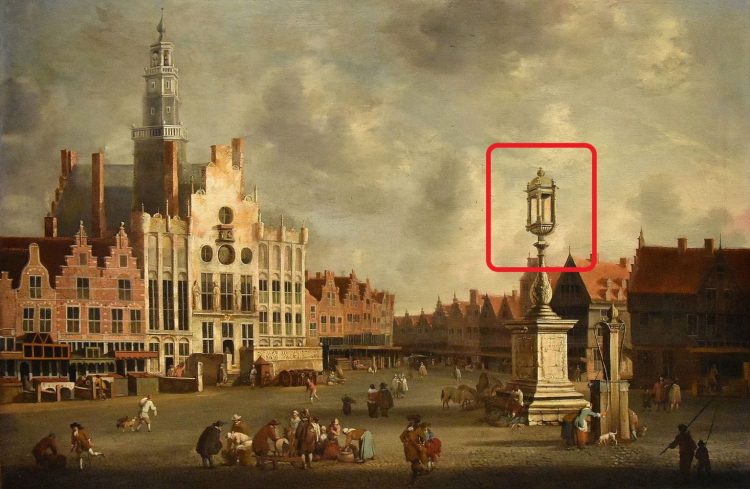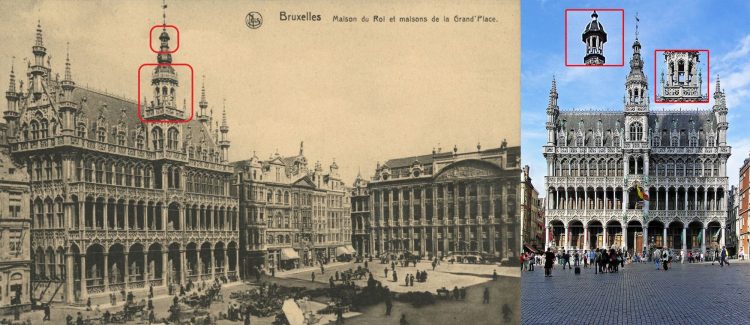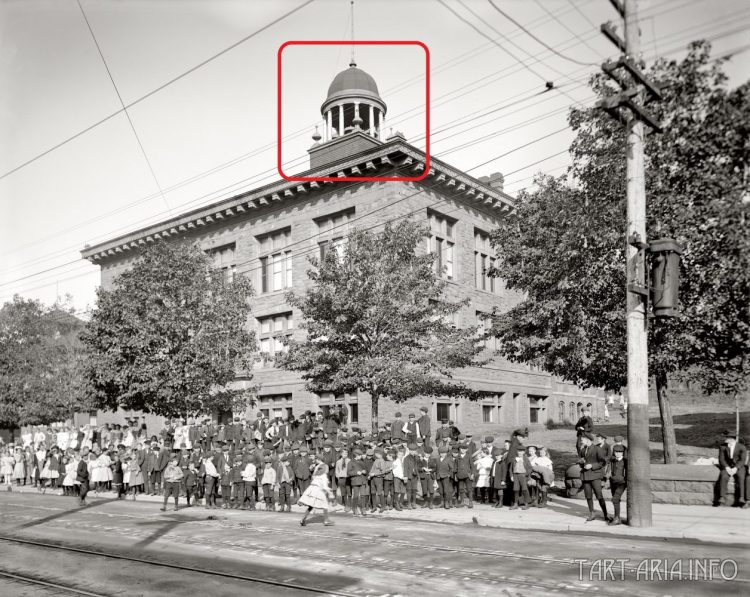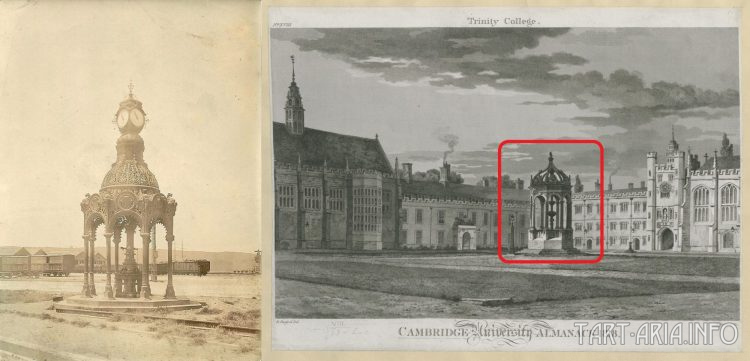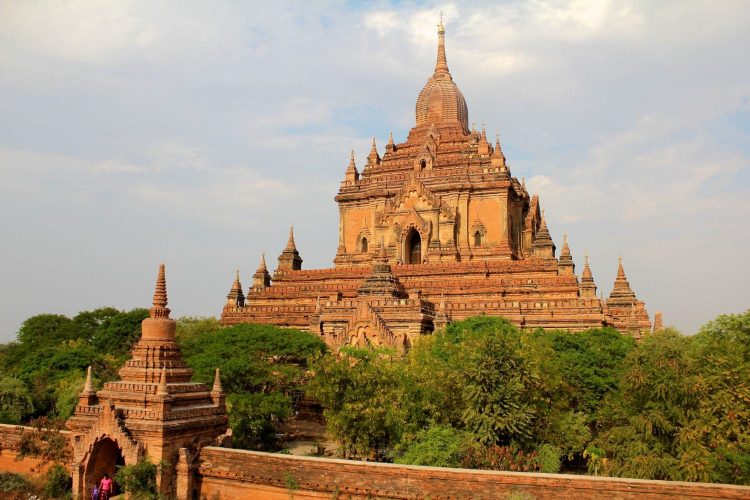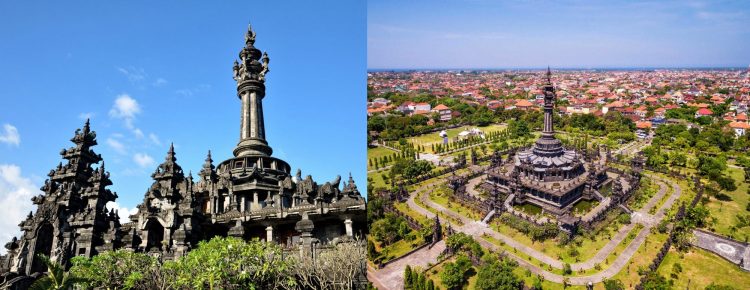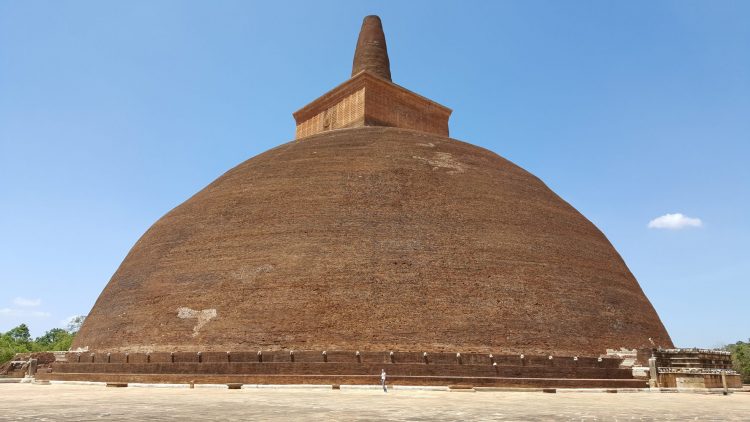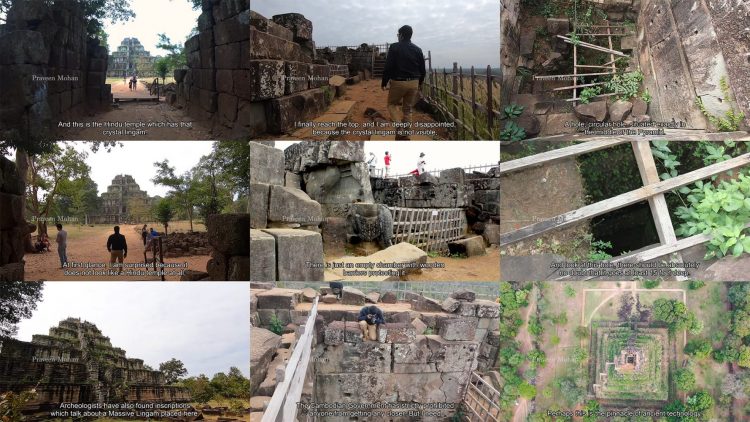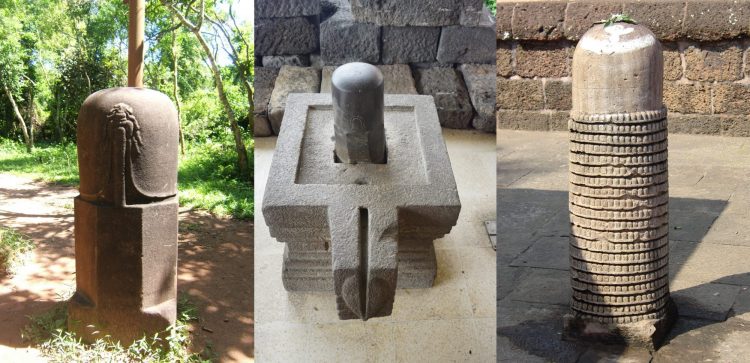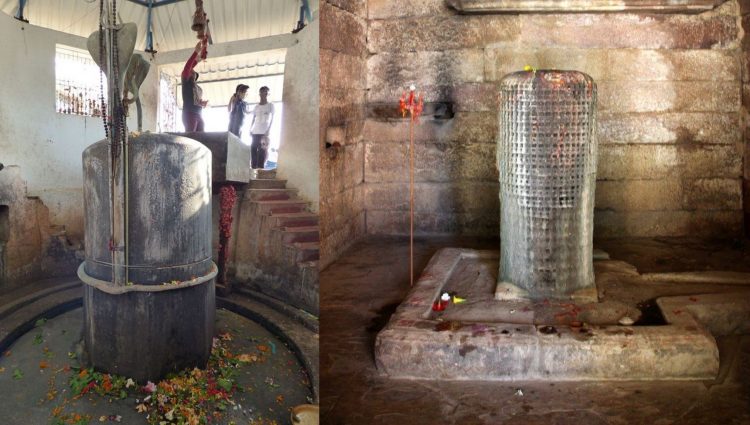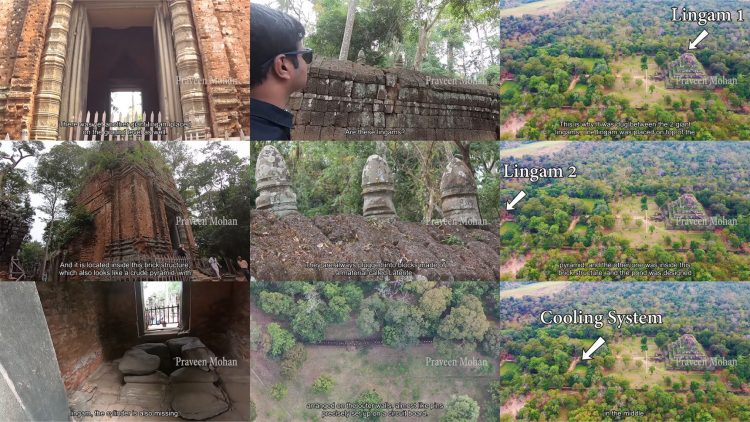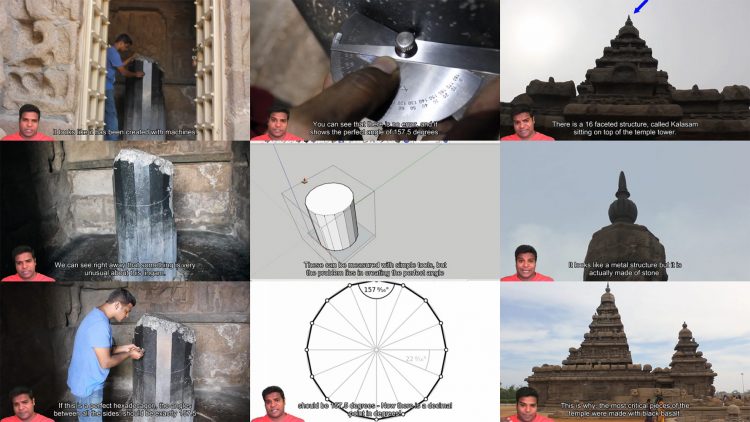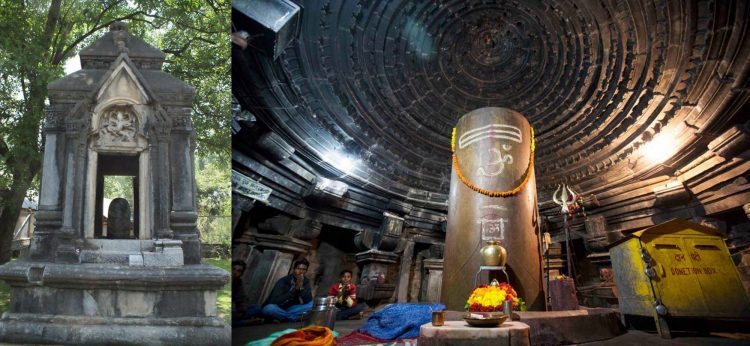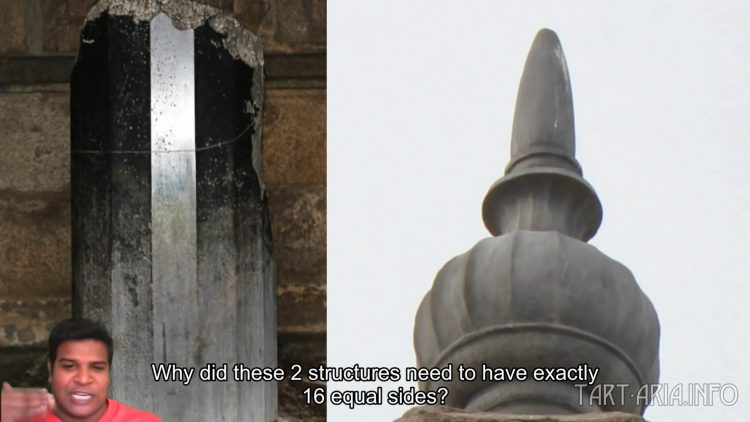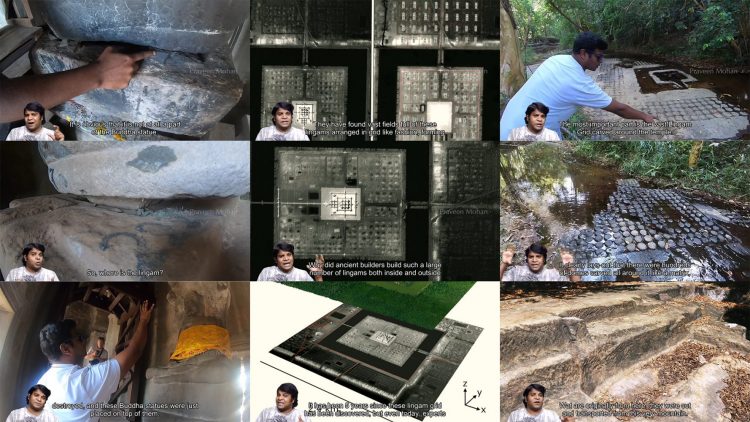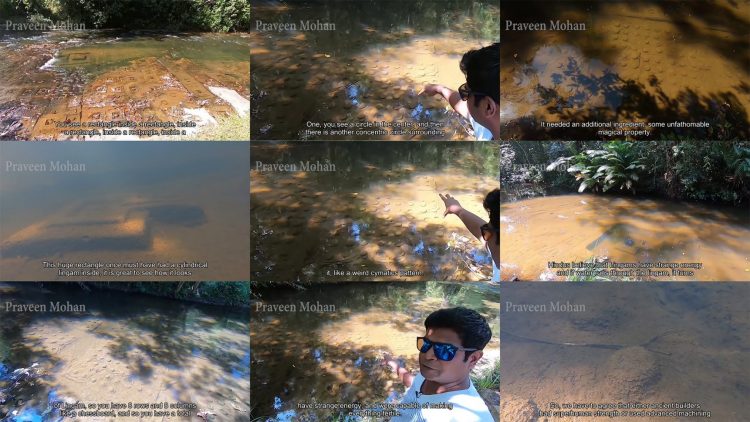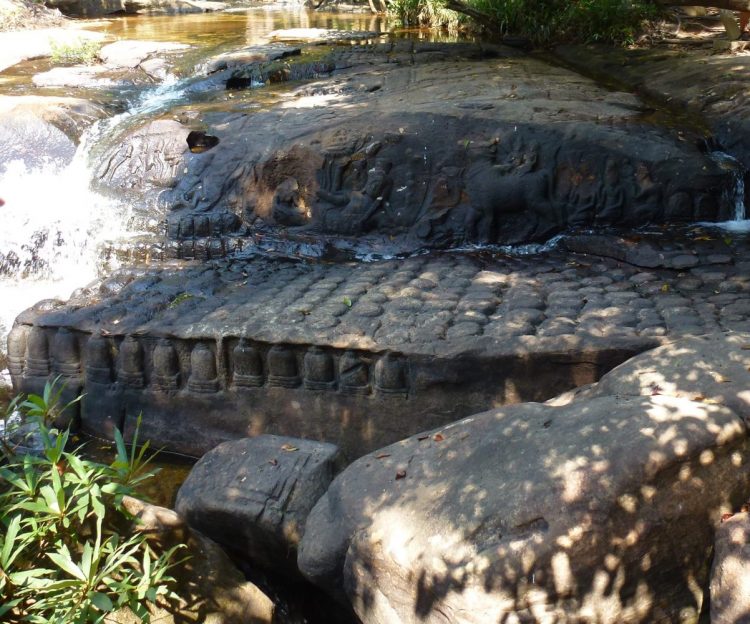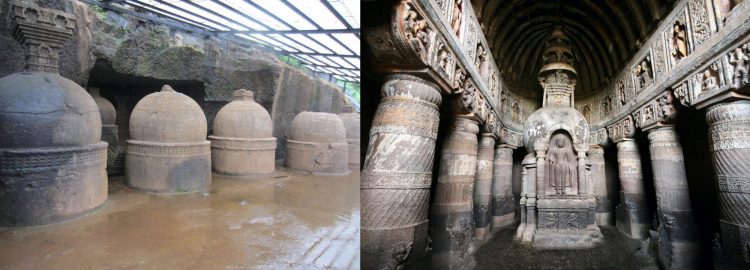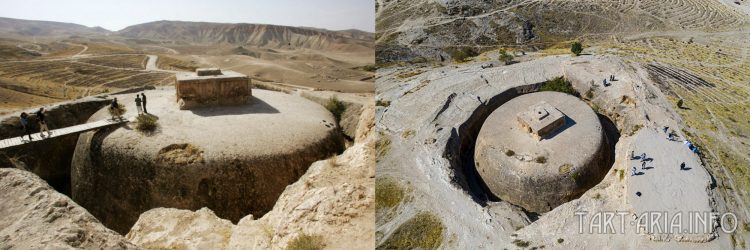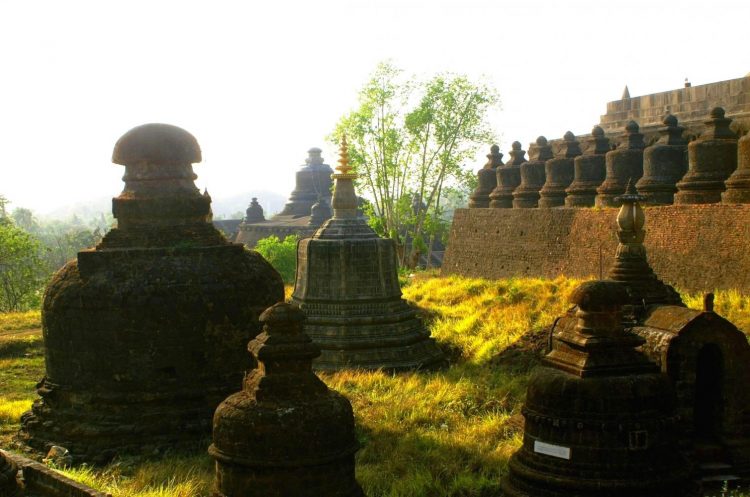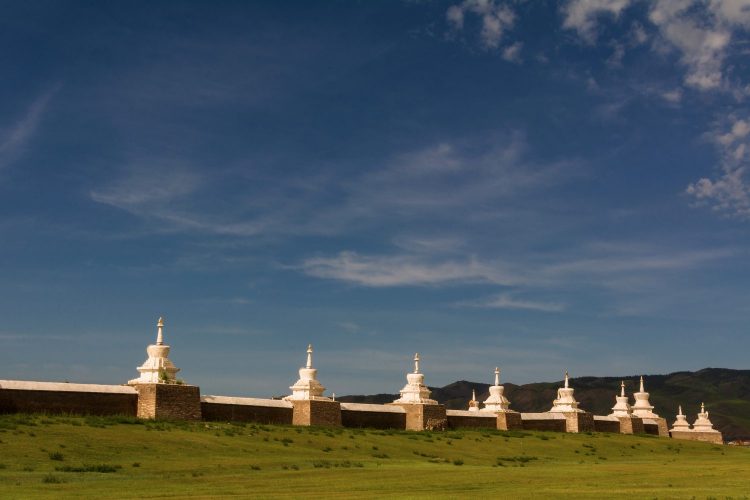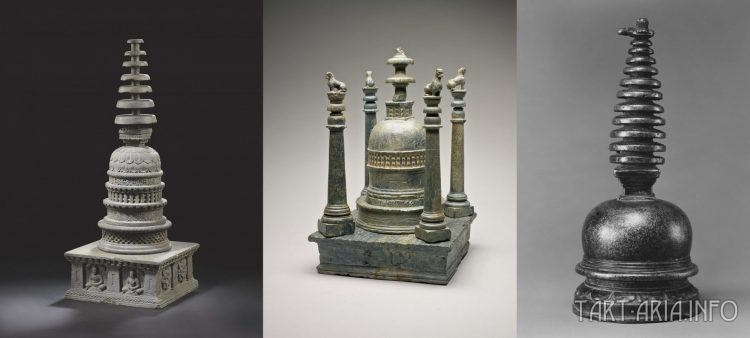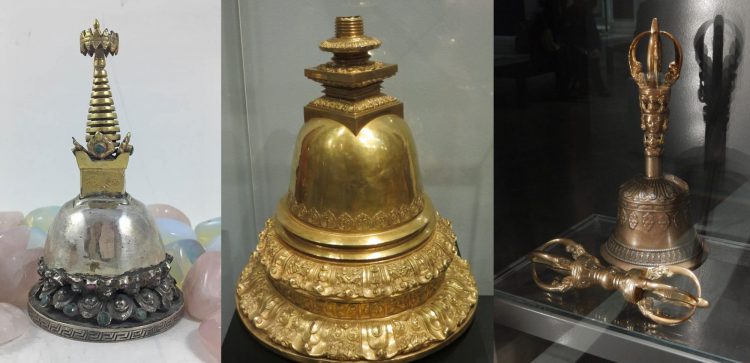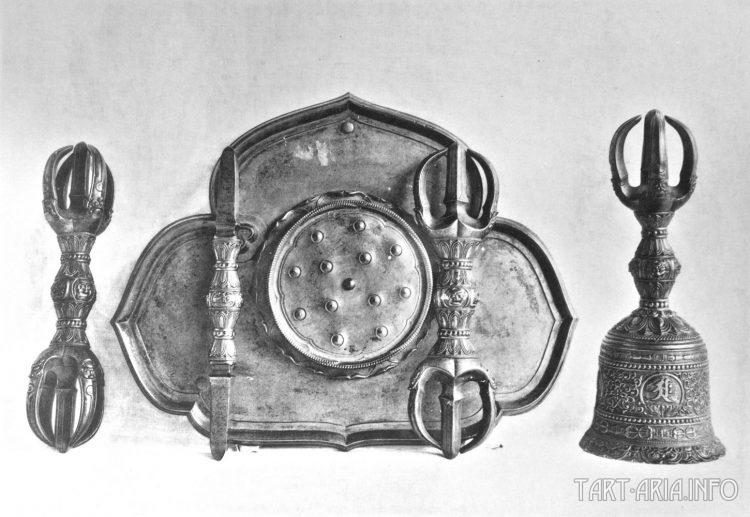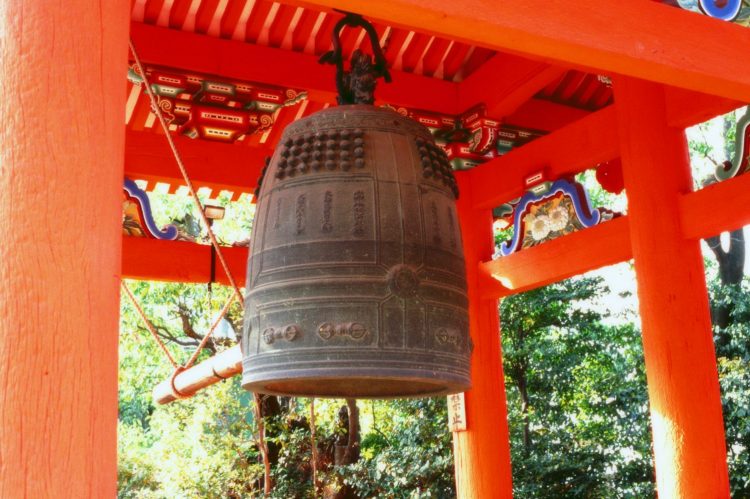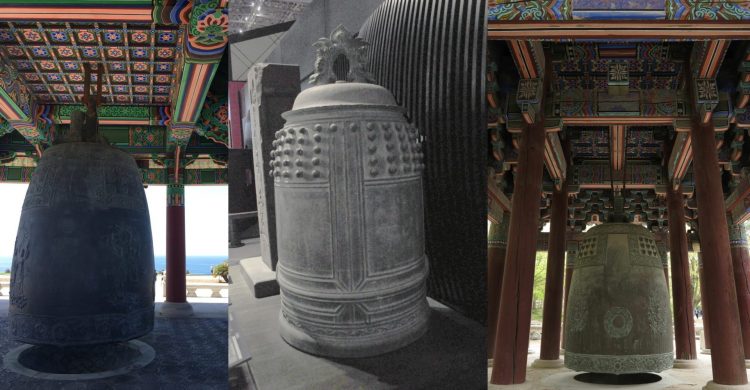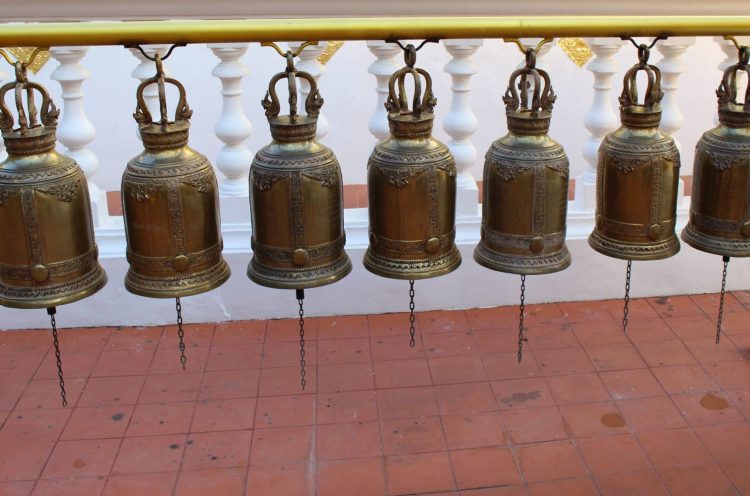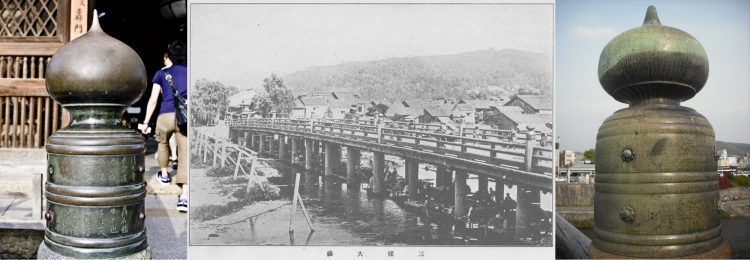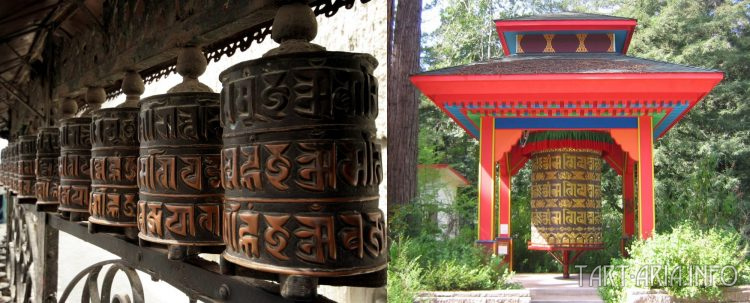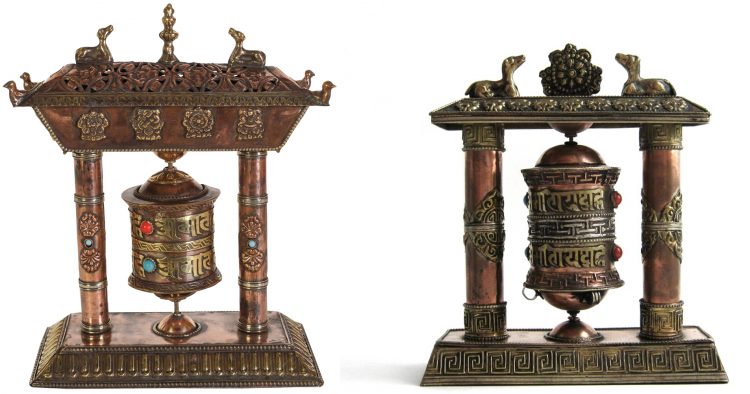In recent years, critically thinking people have shown a significant increase in interest in studying our real history, in exposing the lies that we’ve been so persistently fed, and most importantly, in revealing the secret of energy technologies of the past. Attempts to understand the essence of this phenomenon have been undertaken by various people at different times. Some have done it more successfully, some less. But I personally was led to this topic by the articles of a person nicknamed tech_dancer, who has made a huge contribution to the development of this direction. Largely thanks to his numerous articles, people have become seriously interested in the topic of forgotten energy technologies, which had previously been considered nonsense and invention of conspiracy theorists. It is worth saying that there are still quite a lot of people who do not want to admit the existence of such technologies in the past. But I will not put any labels on anyone, as we indeed live in a very complicated time from all points of view.
Since this article turned out to be very long, I decided to divide it into two parts. The first part is devoted to summarizing everything that has been found in recent years, as well as some new aspects that, for some reason, have practically never been covered by anyone. The second part focuses on trying to explain the physical principles behind the sought-for technology.
As you may have already understood, my research largely relies on the factual base built by the researcher tech_dancer. However, I must warn you in advance that the phenomena that I will look into should not be limited in your mind by terms such as «atmospheric electricity» (which is incorrect in relation to this phenomenon) and even «etheric energy» (due to vagueness of the term). Before we can confidently classify what we are dealing with, we first need to sort everything out.
Chapter 1 – Summary of what we currently know
At first, let’s summarize what we have managed to understand so far (mainly thanks to tech_dancer).
The idea that advanced technologies existed in the past has always been around. However, until just recently it was believed that no significant evidence or artifacts proving this idea exist. But the development of information technology, and particularly the Internet, has greatly simplified the process of processing and spreading information, which has allowed various researchers-enthusiasts to gain access to all kinds of digital archives of old photographs. Whether it was an oversight on the part of the censorship, or someone's intentional actions, but among the photos that appeared in the public domain, there were those that did not fit at all into the official historical picture. In particular, these were photographs depicting some strange devices made in the form of vessels/bowls/spheres:
Over time, many more examples were found, which demonstrated the use of these devices in various fields. The most widespread case of their use turned out to be installation on the roofs of buildings:
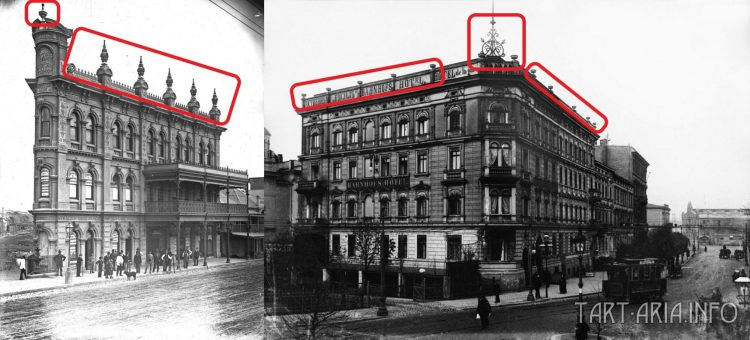
The installation of these vessels at the level of the roofs and various dome structures in many ways prompted the idea that the secret of this technology is somehow connected with the atmosphere. However, everything turned out to be far from simple and unambiguous. After all, the use of these vessels extends far beyond roofs and domed structures alone. Similar vessels are also found on ordinary (or not quite ordinary) furniture:
Near old fireplaces:
On communication devices:
On various household appliances:
A lot of evidence has been gathered so far. These are just a few examples. The main purpose of these devices, presumably, was – either to generate some energy, or to enter into resonance with it.
Another extremely important property of the lost technology (in addition to energy generation) was the ability to positively affect organic and inorganic matter. Without delving at this stage into the subtleties of how exactly this could work, we can say that this effect made people and other living organisms healthy and happy, and also neutralized harmful viruses and bacteria.
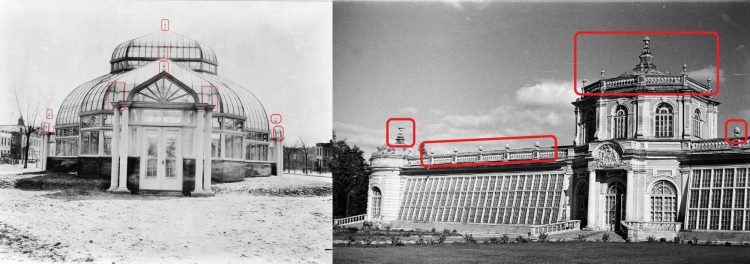
This technology was very undesirable for the forces that seized power on our planet about 200 years ago. A flourishing and healthy society from a physical and moral point of view, that has access to technologies for obtaining unlimited, free, and clean energy, absolutely did not fit into the plans of the dark forces that occupied our civilization. That’s why the technology was hidden and forgotten.
Returning to the question of how this technology works, it should be noted that one of the main principles behind it is related to the way these vessels and installations are located in space. In almost all cases, we are dealing with a geometrically correct arrangement, both at the local level and at the level of the entire engineering network:
The left example demonstrates a local scale symmetry, while the right one demonstrates a city scale symmetry.
According to tech_dancer’s vision, the secret of the addressed vessels is hidden within themselves. According to information obtained from various sources, the vessels contain a certain substance (presumably synthesized using mercury and gold) which has a red tint. Of course, it is impossible to see its real color through an opaque vessel, but its use was not always limited to opaque containers. Quite a large number of unusual artifacts have survived with containers for liquid, which now are considered to have religious origin and purpose:
And although most of them are already empty, or contain all sorts of foreign items, the original contents can still be seen in some rare cases:
If you may doubt about the left artifact, those from the painting on the right evoke much more confidence. Perhaps this is the very «magic» substance that alchemists were so eager to get from the stories about the philosopher’s stone, or the same mystical red mercury that does not exist officially, but may get you into trouble if you somehow manage to obtain it:
The left news article tells about red mercury being smuggled out of USSR upon its fall. The right news article is about two Georgians being caught at Turkish border for an attempt to smuggle red mercury, cesium and some precious stones (they got caught because scanners detected radiation).
If the desired substance can indeed be created using gold and mercury, this well explains why gold is the most reliable and solid world currency (being at the same time expensive and difficult to obtain), as well as why mercury was declared an extremely dangerous and toxic element that should be forced out of household usage. The assumption that these two elements could be used together to create the special substance is evidenced by the fact that gold and mercury are adjacent elements in the periodic table, which indicates their similarity at the atomic level.
Nevertheless, it is almost impossible to find any relevant guides or books providing explanation of the physical or chemical principles behind this technology. Over the years, I personally have found only one piece of evidence related to the unusual use of mercury that is worthy of mentioning. It is taken from the «Scientific American» magazine, particularly the issue released on 21st of January 1888 (thanks to KD from stolenhistory.org for this finding):
Seeing the mention of Geissler tube, one could stop reading and calm down, as this is an ordinary gas-discharge lamp. The physical principle behind these lamps is that electrically conductive gas (including mercury vapor) is pumped into the flask, which is then supplied with a current that makes it glow. Nothing forbidden. However, the text reveals some really curious details if you read it carefully.
The text makes it clear that the mercury inside the tubes is not gaseous but liquid, since it directly speaks about movement of mercury in a circle at different angles and its friction against the walls. Therefore, it is definitely not a gas discharge lamp. The text also describes in detail other types of lamps at the beginning (as a contrast), which excludes the possibility of explaining this phenomenon by some external power sources. The tubes glow exclusively due to the circular movement of mercury inside them.
Not sure about you, but I personally have never come across such properties of mercury, and I could not find anything similar on the Internet to somehow explain this physical phenomenon. My guesses boil down to the fact that mercury is capable of acquiring special properties when it is given a specific rotation (and possibly also a specific shape). Moreover, the text does not say anything about the material the tubes and barriers are made of, which means, perhaps, that they hide some part of the secret. Anyway, at this stage I just wanted to introduce you to this example. You will have the opportunity to think about it and draw your own conclusions, but for now, let's continue to recap what is known for sure.
Even though we can’t be sure about the contents and exact purpose of the mysterious vessels so far, we can’t avoid the fact that there were other elements too. Some old photos contain various variations of columns/obelisks and pillars, which are usually equipped with either vessels or specific tops/finials. It is obvious that they were all elements of one energy system.
Not all elements are highlighted in the photo. Try to find the rest yourself.
Not everything is highlighted here either. The cross marks utility poles for the telegraph line, as these are often confused with the elements of the technology in question.
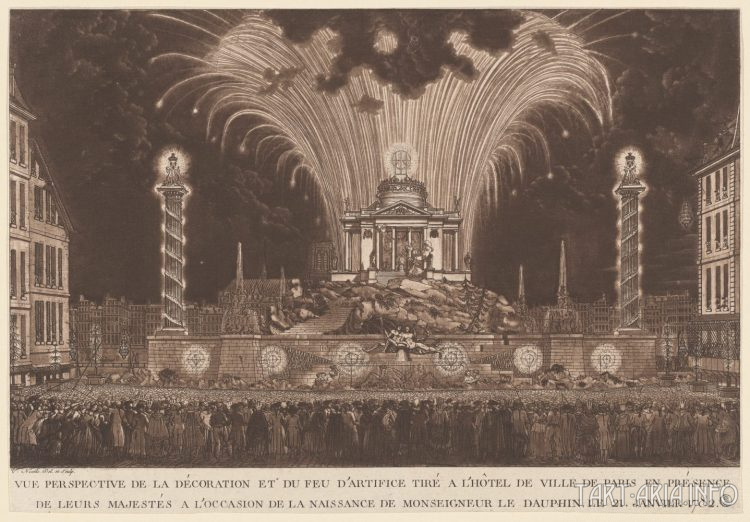
It should be noted that even those small grains that we come across in old photographs belong to a time when the sought-for technology was already on the verge of being completely dismantled from everywhere. By the time photography (re)appeared, individual elements of those installations already no longer functioned, or functioned in a limited mode.
Columns, which recently were part of the energy infrastructure, now stand like ordinary poles, where advertising posters are glued, while trams are pulled by horses.
The photo shows that the obelisk is scorched in the area of the finial, which most likely happened as a result of a general failure in the operation of the power grid, or due to incorrect use of this particular installation.
Almost all of the available photos of that time simultaneously show elements of both old and new technologies. The reason for this is that the period during which these photographs were taken (the second half of the 19th century - the beginning of the 20th) falls exactly at the time when the transition from one technological paradigm to another took place.
This period of time is presented to us as an age of unprecedented discoveries (like electricity, telegraph and radio), but in reality all this was just a kind of reset, during which people were pushed backward, rather than forward in development. This was done in order to create the most suitable conditions for total control of people and suppression of their will, which was probably impossible in the presence of former technologies. But we will not delve into this issue now, since it is crystal clear. The purpose of this section was to briefly concentrate the information that has been collected so far. Now let's try to find and insert the missing puzzles into the existing picture.
Chapter 2 – The missing element
To make my sequence of thoughts more understandable to you, I will lead you along the same path that I myself followed.
Looking at countless photographs of old architecture and remnants of the old technology over a long time, I began to notice something strange. All architecture of that time is notable for sophisticated design and rigorous attention to details. Every brick, cornice, column, dome and all other architectural elements seem to be in invisible harmony with each other. Everything looks perfect.....except for one element:
Analyzing dozens of photos kept me thinking about one particular thing – why are the marked parts empty on almost all structures? What’s the point of giving all buildings such complex design, give an aesthetic meaning to every centimeter of the structure, but at the same time leave the most prominent part empty? It just doesn’t make sense.
The truth is that countless articles and videos have already been made on the topic of domed structures being parts of the lost energy systems. Tech_dancer shows these installations almost in each of his articles. Nevertheless, almost all domed installations that are currently found in the materials of various researchers are depicted partially or completely disassembled (as in the three previous photographs). Only in super rare cases do you come across remnants or hints that there could be something else inside them:
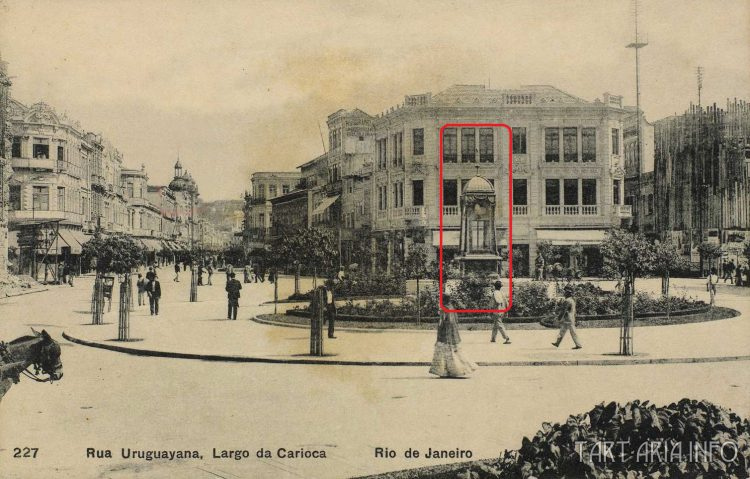
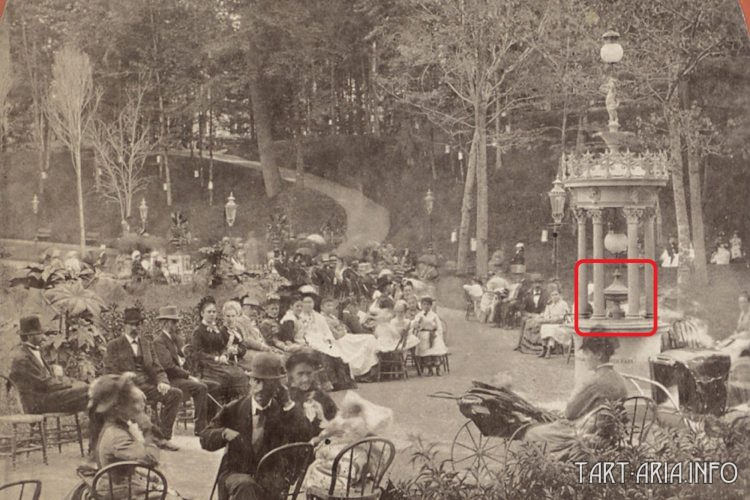
The last example can be used as a good argument in favor of the assumption that domed installations once contained vessels with a special substance. The same conclusion can be reached by looking at the following illustration:
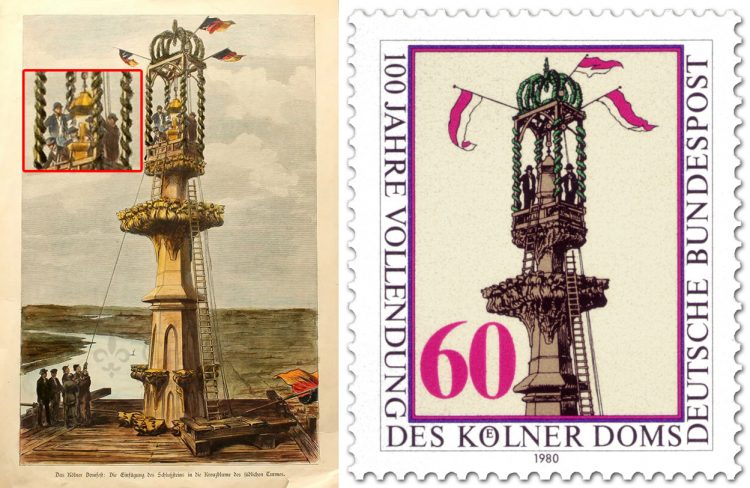
The left image shows us an extremely rare case of a column, being equipped with an old-tech device (the top of the column is nothing else than a domed structure, just a bit smaller than we saw previously). It clearly shows that the workers are installing a certain transparent cylindrical object, very similar to one of the previously shown vessels with red matter.
On the one hand, it seems that the secret of the lost technology has been solved – it is hidden in the very vessels. But deep down, something told me that everything was not as simple as it seems at first glance. Therefore, I decided to study this issue more thoroughly.
The main reason for my doubts lay in the fact that even in the oldest photos (where buildings still have special vessels) the dome installations are already empty:
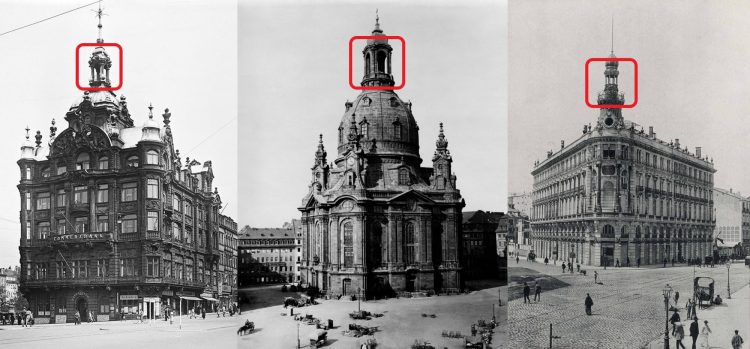
The fact that the inner part of these structures disappeared first, clearly tells us that we are dealing, if not with the main, then one of the key elements of these installations. What could it be, if not a vessel?
Of course, it can be assumed that the domed installations on roofs were just viewing platforms. And in some cases, perhaps, it is true. But most often this part is too small to be a viewing platform, while somewhere the viewing platform is present at the same time with the empty domed installation:
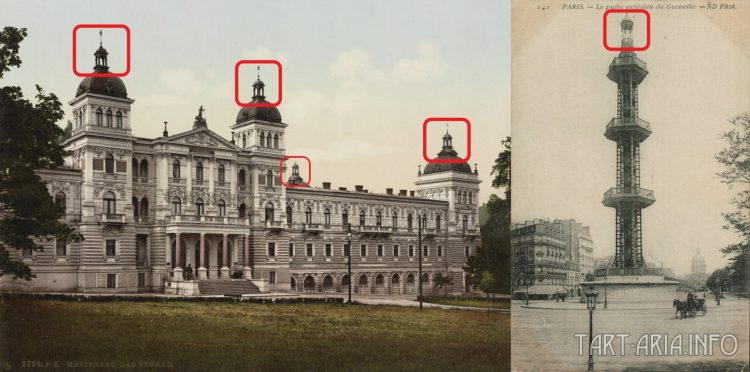
What other options could there be? Of course, a bell comes to mind, and they were undoubtedly hung in this place on many buildings. But there is also one logical problem with bells – why are they needed? Who decided in the first place that buildings should have bells and that everyone should like their ringing? Would you say that people determined the time this way? What about the fact that the energy technologies that we are trying to disclose and explain are much more advanced than what we have now. Do you think that people of that time didn’t have alarm clocks or watches to tell the time? It is ok for for the traditional history to explain that people of the past used bast shoes and did not know how to count to 10, thus depending on some kind of bells in order to tell the time. But the people of the civilization that we are discovering bit by bit could easily do without bells. Just imagine yourself – would you like bells to ring constantly around you in the city? Even if they did not ring constantly, I am sure that many people would definitely not like this idea. And that's not even the point.
The top of the tower looks like it was hastily disassembled in order to remove the contents, but for some reason they forgot (or did not want to) put it back together. Nonetheless they put some absurd little bell in there (as if this is how it should be). Nowadays the building looks the same way.
The fact that the domed structures of the past did not contain primitive ringing bells is a separate issue, to which we will return later. Let's think about how we can understand what else could be there. Naturally, the first thing that comes to mind is to look for more photos, which is exactly what I did. But as I had expected, it was extremely difficult to find anything useful. In most old photos these parts of buildings are almost always either empty:
Or hidden inside a closed framework, like in the following photos:
But sometimes I was lucky to come across some really interesting pieces of evidence:
The only problem is that it is very difficult to say for sure what exactly is shown in these photos. It can be either an optical illusion or just some random objects that somehow appeared inside these structures. But since I am not used to believing in coincidences, I continued to search further, and it turned out that it was not in vain. I found other curious photos:
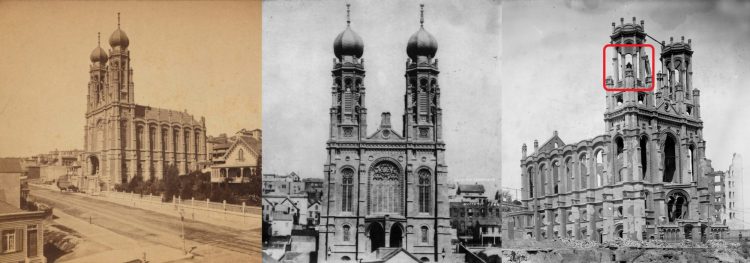
At this stage, I had two logical questions – what specific function did these devices perform before they were widely seized and what exact shape did they have to be? The examples we have seen demonstrate objects of cylindrical or spherical shapes. If spheres are potential vessels with special substance, then what were the cylindrical devices?
Either way, spheres and cylinders are not the only types of shape found in dome installations. Sometimes you may come across rods, which probably used to be either lighting fixtures or holders/conductors for something else.
The photo on the right was most likely taken earlier.
Perhaps something similar is depicted here as well:
Looking at the last three examples, one could decide that these are the very same lighting devices of that time, which were analyzed by tech_dancer in the article «Helios». In that article, an idea is put forward that devices like these were gas-discharge lamps (which are absolutely usual), but at the same time, their power source and generally accepted knowledge about the physical properties of a number of chemical elements are questioned.
Either way, the perception of dome installations as light sources is logical and natural. It is probably the very first thing that comes to mind when you look at them. Even in architectural terminology, among other terms describing this element of buildings (drum, tolobat), there is one that seems to be the most suitable – lantern.
However, we should not be tempted to write off the whole thing as just lamps, because in this case, we will simply confuse cause and effect. Even though some dome structures were indeed light sources, we obviously cannot say that about all the examples considered. At least because some of them were in a closed framework, and clearly could not be lamps. Moreover, there are photos showing dome structures with odd disc-shaped devices that do not look like lighting fixtures at all:
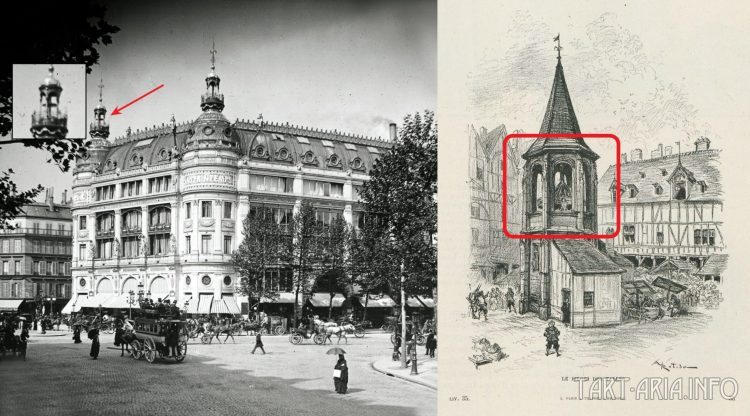
The photo below doesn’t have any disc-shaped devices, but there are some disc-shaped holders instead, where something round could be attached:
In this example the holders are present in two spots of the dome, which allows us to conclude that a similar installation scheme for the sought-for devices could be used in other buildings with a similar layout.
There is even an example of a device that utilizes several discs at once:
Of course, we cannot be 100% sure that this photo shows exactly what we are looking for. However, having looked through thousands of photographs of old architecture, I can say with confidence that I have not seen anything like this in other photos.
And here are several more examples of what fully or partially equipped dome installations might look like:
Both photos obviously demonstrate old-style fountains. Here it is important to pay attention to the design of the installation itself.
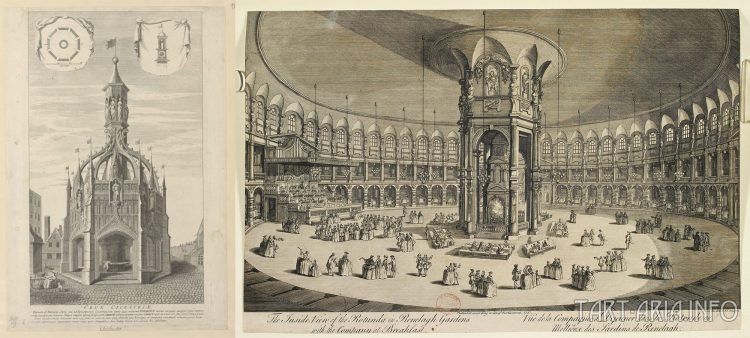
The last two illustrations show installations of a similar operation principle, though of a slightly larger size.
Thus, we have the following picture. Dome structures once contained some unknown devices of various shapes (cylindrical, spherical, rod and disc-shaped). Based on the examples presented, it is difficult to draw a straight conclusion about the principle of their work, however, we know for sure that one of the options for their use is lighting. It is easy to guess that if there is light – there is also energy. But how can we understand what kind of energy and the method of its generation we are dealing with? One of the possible and simplest options is the method of comparing various examples, in order to highlight the main technical features among them, based on the visual appearance and other details. The results obtained, in turn, could give us hints about a physical principle utilized in these devices. However, for this method to work, you need to have more reliable and detailed evidence in your hands.
Although much more photographs of old Europe and North America have survived than photographs of other parts of the planet, having looked through a huge number of them, I realized that I would not find the answers that I was looking for. Moreover, almost all remnants of the old technology were seized in these parts of the world. With all this in mind, I decided to focus my attention on a different and much less explored region.
Based on the information obtained by us and our colleagues, the seizure and destruction of the former civilization on the Eurasian continent went from west to east, which means that the eastern lands were subjected to «modernization» in the last turn. Another important factor was the fact that this territory is located quite far from the «metropolis». If the western part of the continent was turned by the invaders into their home (where they showed a certain delicacy in dismantling old technologies and foundations there), the eastern part had to be «castrated» quickly and cruelly. But fast doesn't always mean good. In some countries of the South Asia region, such as India and Cambodia for example, quite a lot of relics and traditions of the past have been preserved. Was negligence the reason for this, or just the human factor – it's hard to say. But this circumstance certainly plays into our hands. After all, it was there that I managed to find the answers that I had been looking for for so long.
Chapter 3 – The mystery of Indian lingams
As mentioned earlier, southern Asia has miraculously managed to keep a lot of interesting artifacts, which are mostly temples (at least that is what they are called now). Some are very famous, and some haven’t been seen by almost anyone, because they are hidden somewhere deep in the wilderness. There are so many of these temples, and they are all so similar to each other that you can easily get confused trying to catalog them somehow. Here are just some variations of these temples:
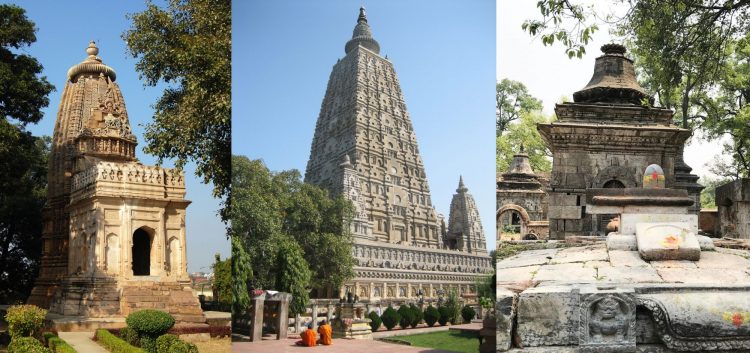
There are thousands of such photographs on the Internet, and even looking at a few of them, one can easily notice the uniform architectural style of these structures, as well as the ubiquitous local symmetry. Moreover, they also contain previously discussed architectural (or rather technical) elements, such as vessels, columns, and other structures of a familiar shape.
The only problem is that studying this whole region by just searching for pictures on the Internet is too time consuming and ineffective. Therefore, I decided that the most rational way would be to find some kind of local guide, so I found one. It was an Indian man named Praveen Mohan and his wonderful YouTube channel, which contains a huge number of videos on ancient Indian history as well as on the topic of forgotten technologies of the past. Praveen is passionate about his work, therefore he meticulously researches various ancient sites of India and of other nearby South Asian countries, and sometimes finds things that no one had shown before him, and which cannot be found just by using a search engine.
In our case, we should be interested in several specific videos. The first one is titled «30 FEET CRYSTAL LINGAM Found in Cambodia? Ancient Koh Ker Pyramid reveals Advanced Technology?».
For each video, I will provide a summarizing preview, in case you do not have time (or desire) to watch them in full. This is also done in case the videos are ever deleted (and cannot be re-uploaded).
In this video, Praveen explores an ancient Cambodian temple named «Koh Ker». According to initial information, a huge lingam, made of transparent crystalline material, had to be installed somewhere in this temple. However, having climbed to the top of this pyramidal temple, Praveen discovers that the lingam had been removed long time ago, and only a broken structure remains which once housed the lingam. Another notable detail is the presence of an even hole, carved along the axis of the pyramid, extending from the bottom to the very top. At the end of the video, Praveen himself concludes that the temple, together with the crystal, were one technical device that could be used to establish communication, both between other similar structures and with the gods.
Anyway, at this stage, you are likely to have the following questions: What is a lingam? Why was it crystalline? Where and how exactly was it supposed to be installed? Let's sort it out in order. Let's start with the lingams.
First of all, let’s check Wikipedia for the «official» explanation:
A lingam (Sanskrit: लिङ्ग IAST: liṅga, lit. "sign, symbol or mark"), sometimes referred to as linga or Shiva linga, is an abstract or aniconic representation of the Hindu deity Shiva in Shaivism. Other contextual meanings of the term include "evidence, proof, symptom" of God and God's power.
The lingam of the Shaivism tradition is a short cylindrical pillar-like symbol of Shiva, made of stone, metal, gem, wood, clay or disposable material. According to Encyclopædia Britannica, the lingam is a votary aniconic object found in the sanctum of Shiva temples and private shrines that symbolizes Shiva and is "revered as an emblem of generative power". It often is found within a lipped, disked structure that is an emblem of goddess Shakti and this is called the yoni. Together they symbolize the union of the feminine and the masculine principles, and "the totality of all existence", states Encyclopædia Britannica.
Lingam - Wikipedia
Even though you can find some hints of its energy-related properties, the text obviously leans towards the idea that lingams are just «anatomically realistic representations of a phallus». However, many lingams (especially the modern ones) are indeed made in the form of male genital organs, and a lot of people don’t try to look further. But I am surely not falling for the «phallus concept», and will try to convince you as well that lingams were not just phallic cylinders. The mere information about the installation of the crystal lingam at the top of the pyramid should have already pushed you to certain thoughts. But before we continue with lingams and other questions, you need to watch a video titled «1000 Year Old ENERGY LINGAM Discovered? Advanced Ancient Technology at Koh Ker Pyramid, Cambodia», which is a continuation of the previous one.
In this video, having studied the temple complex more thoroughly, Praveen shows an installation site of another large lingam, which also turned out to be removed long time ago. Also, after talking with local residents, Praveen learns that the area in which the temple is located was originally called «Lingapura», and the temple itself was called «Sahastralinga», which translates as «1000 lingams» (moreover, according to Praveen himself, there are many places in Cambodia, that have the name «Sahastralinga»). At first, Praveen doesn’t understand where the remaining 998 lingams are located, suggesting that they may be hidden inside the pyramid or buried somewhere under the territory of the complex. But then he notices strange cylindrical tips placed on a stone fence, exactly around the perimeter of the complex. Praveen concludes that these tips are the very remaining lingams, and that they all worked in conjunction with the temple, like parts of a circuit board. And an artificial pond, dug in the middle of the complex, was used, in its turn, as a cooling system.
Thus, we already have a pretty curious picture. Firstly, we have seen that lingams can be of different shapes and that they do not have to be genitals. Secondly, we can clearly observe local symmetry once again – the lingams are placed in one row, according to the same principle, as vessels with a special substance were placed on buildings. And most importantly, the place where the second large lingam used to be installed looks very similar to the previously discussed dome structures. But based on one video, it is difficult to say what exactly we are dealing with, because we didn’t have the opportunity to see the configuration of the structure, and there was no main device inside. But if something is not present in one place, sooner or later it will be found in another. And this another place was found in the following video, titled «India's Oldest Lingam - Evidence of Ancient Machining Technology».
In this video, Praveen visits the «Shore Temple» in the Indian city of Mahabalipuram, where according to him the oldest lingam is located. The lingam itself is unfortunately damaged, but even what’s left of it amazes with the quality and accuracy of execution. The lingam has 16 edges with absolutely even corners, which is extremely difficult to do even with specialized equipment. This temple is also interesting because at its top there are well-known vessel-like devices. In India, such finials/tops are referred to as «kalasam». It should be noted the smaller domed structure does not have a lingam inside, and the top/kalasam looks damaged (since it differs from the one on the higher structure). Nevertheless, the kalasam towering above the main structure has the same number of faces (16) as the lingam located below, which cannot be a simple coincidence. Also, according to Praveen, an important detail is that even though the temple itself is made of granite, the lingam and kalasams are made of basalt. In his opinion, the creators of the temple did so deliberately, since basalt yields to corrosion to a lesser extent than granite. That is why the key parts of the temple were made of basalt (even in the video you can see that the lingam and kalasams have been preserved much better than the rest of the temple).
For me personally, this video was a turning point. Thanks to it I finally became convinced that I was on the right path. To make it clear to you why this video is important, I will try to reveal my sequence of thoughts.
If you look at the structure of the temple and peel off ornaments and other decorations, you’ll get the most common dome structure like those that we analyzed at the beginning of the article. But this time it is not empty. South Asia is probably the last place on the planet where it is still possible (although with some difficulty) to find the remains of such installations in full and original configuration.
And if lingams were installed in dome structures in South Asia, it is logical to assume that similar technology could be used in other parts of the planet. And given that we have already found traces of its use in other parts of the world, the findings in India should dispel the last doubts. Moreover, thanks to the latest video, it became clear that the device inside the dome structure is a separate and independent component, and not just a copy of the vessel, made in a different form. And although the vessels could also be installed inside dome installations (as we saw in some examples earlier), they surely were not the only type of devices that were installed inside (and most likely not even the main one).
But the shared symmetry between the lingam and the kalasam/vessel clearly hints at a direct connection between these two elements. It may also indicate a possible need to synchronize all elements of the local system. It also can be a reason why the lingam was not destroyed completely. It seems that to make the entire installation inoperable you just need to break the integrity and symmetry of key components.
But how does this synchronization happen? What exactly can be the main secret – materials, frequency of vibrations, ideal geometric shape, or maybe everything at once? Having found the answer to one question, we have come across a set of other questions. But no one said that it would be easy, so let's proceed further.
The next video to analyze is «108 SECRET LINGAMS Hidden in Angkor Wat? Ancient Energy Machines Revealed».
This time Praveen tells about one interesting find related to the «Angkor Wat» temple in Cambodia. Before showing the key part, he mentions one curious detail regarding the Buddha statues located inside the temple. These statues did not originally stand there (which is an indisputable fact, given the obvious difference in the design of the joints). According to Praveen, these statues were placed there at a certain point in history, when some radical change in culture and religion ocurred. And initially, lingams were standing in the place of those statues.
Praveen then moves on to the main topic of the video related to an interesting discovery made in 2015 using LIDAR technology. This technology has quite a few applications, including the terrestrial laser scanning. When the Angkor Wat temple was scanned with this technology, researchers discovered a startling find. It turned out that the underground layer of the temple complex hides a whole bunch of strange cylindrical objects that form an even grid around the temple. Praveen is absolutely convinced that these cylindrical objects are nothing else than lingams. In support of his conclusions, Praveen demonstrates another interesting find associated with this temple. In the «Phnomkulen National Park», on the mountain (of the same name), located about 50 km from the Angkor Wat temple, you can see a relief image carved right into the rocks. This relief mirrors the layout of the Angkor Wat temple, and clearly demonstrates the familiar cylindrical objects, lined up in an even «matrix» grid. Praveen believes that this relief is a kind of blueprint from the time when Angkor War was being constructed. Moreover, even according to official archaeological data, the stones, used in construction of Angkor Wat temple, were carved precisely in this area, which provides additional confirmation of the connection between the temple and the relief.
However, the blueprint for the Angkor Wat temple is not the only interesting artifact in the Phnomkulen Park. More information about this place can be found in another video by Praveen Mohan, which he made before he learned about the find with LIDAR. The video is titled «1000 Year Old UNDERWATER Lingams Found in Cambodia? Ancient Technology Revealed at Phnom Kulen».
In this video, Praveen shows a relief similar to what we saw in the previous video, but this time it is carved along the bottom of the river that flows there. But if the relief in the previous example was most likely just a visual plan of the temple without any specific purpose, the relief in the river most probably had a specific practical application. If you look closely at the relief itself, you can see that it is made up of small lingams, lined up in even and similar square cells. Although it is difficult to explain the logic and technical concept behind this thing right away, we can guess the purpose of this grid of lingams from Praveen's explanation. According to him, it is known from local legends that many years ago, the inhabitants of this area tried to sow rice fields at the foot of the mountain, using the water of the river that flows out of it. But they could not do this, since the soil was infertile. In order to solve this problem, the bottom of the river was filled with lingams, which, according to the beliefs of local residents, have magical properties. According to Praveen, the currently existing religious ritual of pouring water over lingams is based on this very idea. Thus, the water that passed through the lingam grid acquires improved properties and makes the soil fertile.
Now it's time to summarize what was shown in the last two videos and draw some conclusions. I intentionally showed you two videos in a row to give you a broader understanding of how the technology in question could be used. As you may have noticed, one of its key aspects is symmetry and inner similarity. They are observed both in the design of the «frame» of architectural (engineering) networks, and in the arrangement of its key components. Obviously, there is a certain physical principle behind this, thanks to which these unusual properties (like water’s quality improvement) are manifested or amplified.
And if you still have doubts about the fact that we are dealing with lingams, and not just ordinary stones (even of ideal shape), take a look at the following photo taken in the same Phnomkulen park:
The far-sighted engineers of the past wisely decided to leave clues, depicting a grid of lingams in a side section so that we could understand what exactly is located there. And if you have ever browsed through the old architecture of South Asia, then you have probably noticed objects of similar shapes in other places, without even knowing that they may have a similar purpose.
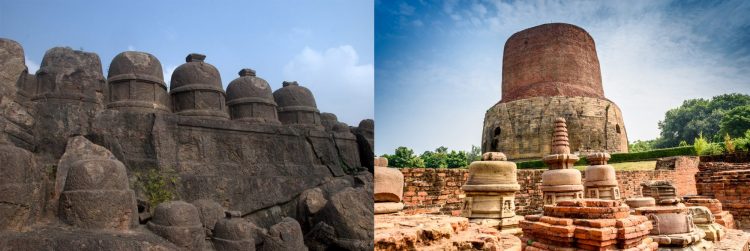
Untrained people often mistake them for completely different structures due to some differences in size and shape. But if you take a closer look at the proportions of these structures and compare them with each other, it is not difficult to notice the uniformity in their design.
The confusion arises largely due to the fact that people do not understand the true purpose of the buildings of the past. So when a «lingam» is given a slightly different form, it becomes a «stupa». And on top of all this, cultural and religious differences are added.
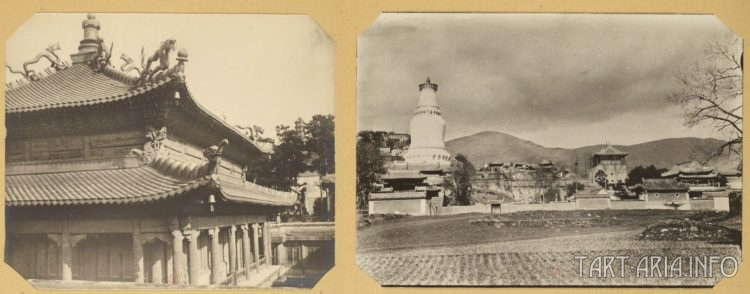
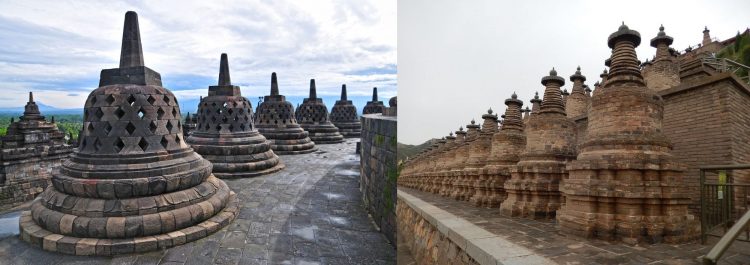
There is one extremely remarkable detail associated with all these devices, which, I hope, you have already noticed on your own:
Do you understand now what I'm hinting at? All these lingams, stupas, vajras, «bells» are interchangeable elements that work on the same physical principle. The last several examples very clearly demonstrate how one element of the system can be replaced by another without changing the essence. Knowing how all the elements in the system should look like, you can easily find the lacking parts in places where they were once removed/destroyed.
When I said at the beginning of the article that there were no ringing bells in the dome structures of the past, I first of all implied not the total absence of bell-shaped devices inside them, but rather the fact that these devices, in their original form, worked in a completely different way. In other words, nobody was hitting them to extract sound. Moreover, as already mentioned before, the bell-shaped form of the sought devices is only one of the possible variations, and not the only one, as one might think.
Although the evil forces have been deliberately destroying and hiding knowledge of past technologies for years, they haven’t been able to do it completely. But information, one way or another, was lost under a thick layer of cultural differences in different parts of the world. That is why the picture becomes clear only when we put together puzzles found in various fragments of a once united culture.
When people see a hanging bell in its modern sense, they do not find it odd that it is used to produce sound. But when a bell-shaped device is soldered to the vajra, it provokes some very interesting thoughts (although an average person will most likely think that it is just an ordinary rattle).
But before we finish with the bells, I want to show you several more interesting examples. The following photo shows a type of bell widely found in various temples of Asia:
It even has a vajra image on it.
You can find a lot of photos of such bells on the Internet. Here are some more examples from various Buddhist temples:
Pay attention to the image of two people with the sun on the left bell. It seems interesting to me.
Pay attention to how carelessly the central rods are cut (they were replaced with modern clappers and chains).
And now look at the following example:
In Japan such tips are called «giboshi». Most often they can be found in temples, shrines and traditional Japanese gardens. I show it to you because I could not fail to notice a suspicious similarity with the narrow bells demonstrated earlier. If you carefully examined all those artifacts from South Asia that I gave as examples, you should have noticed that there are certain similarities between all of them. In other words, they are made in the same style. There is no such thing that in one place a lingam is cylindrical, and in another it is square. Everything is done in a similar way. We see the same thing here – both giboshi and the the bell-shaped devices (that are nowadays presented to us as ringing bells) have the same proportions. But if giboshi couldn’t be turned into ringing buckets, the latter were successfully «disarmed» and reintroduced as bells in the traditional sense of the word.
And here are some more interesting artifacts, but this time from China, which look like a hybrid between a domed installation and an Asian bell:
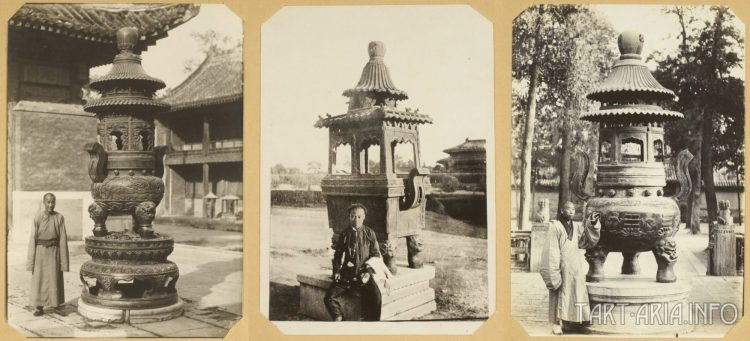
I wish the «reactant» was still inside.
Another curious example is the so-called «prayer wheel» used in Buddhism:
Based on the information taken from Wikipedia, the meaning behind spinning of this drum-shaped wheel is closely related to the concept of «wheel of Dharma». In simpler words, the rotation of the drum helps to cleanse Karma and manifest other positive effects. For this, texts of sacred mantras are applied to the drum. The rotation of these mantras is considered to be comparable in efficiency with oral reading. Also, mantras are written on a scroll, which is then wound around a rod inside the drum called «the tree of life». It is believed that the prayer wheel must be rotated clockwise, due to the nature of the Sun’s movement. But in rare cases, it is allowed to rotate it counterclockwise, thus releasing more furious energy.
Not sure about you, but I found many of the details very interesting, especially about the type of energy released depending on rotation (clockwise and counterclockwise). In the depths of these traditions there is clearly much more than it might seem at first glance. But the drums/wheels shown in the last example are not very similar to the devices that we were analyzing earlier. More suitable and illustrative examples can be seen in the following image:
What you see is another variation of the dome-shaped installation. And although this is not a fully-featured stationary version like those from India, the essence remains the same. Now, for a more complete understanding, take a look at the following comparison:
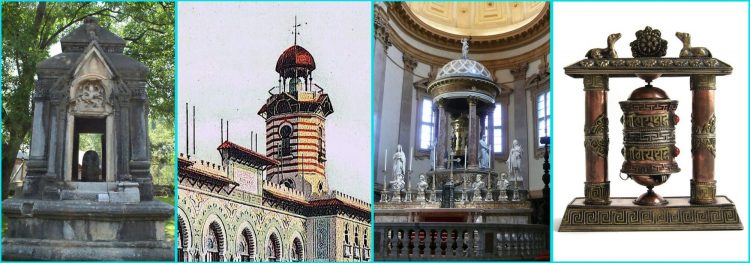
The photo of the installation from Milan church is one of my favorites. They were seized almost everywhere on the European territory, but here they apparently decided to leave it for beauty. Thanks to this we can clearly see that we are dealing with the same device. Even though its contents were most likely emptied long time ago, finding even a container in such place is big luck.
Although all four examples obviously worked on the same physical principle (given the similarity in shape and place of installation), it should be noted that the lingams, in contrast to the iron cylindrical drums and bells, were a slightly different type of device. Cylindrical drums and bells had some kind of built-in mechanism inside, while lingams are solid objects (mostly minerals, but in same rare cases – metals).
Thus, I came to the conclusion that ordinary dome-shaped structures were not full-featured energy installations. In their original form, such installations were equipped with an additional device, directly related to the collection/generation of energy. This device was usually located within a dome structure. There were at least two (or even three) different types of these devices – solid minerals/crystals (aka lingams), metal bells and drums with unknown contents, as well as vessels with a special substance. Considering that very few pieces of evidence related to these devices managed to survive, only one conclusion comes to mind – someone tried very hard to hide this information.
However, we still need to answer questions such as:
What is the fundamental difference between installations made of solid materials and those that had some kind of filling? The drums and bells in the original configuration were larger counterparts of vessels, or a completely different type of device? Can crystals contain the secret of the sought-for technology?
The devices shown in this article are just one aspect of the lost key to the energy systems of the past. The next part of the article will examine and try to answer much more important questions related to the lost technology.
If at some point you decide to borrow ideas from this article for the content of your personal website/group/channel, please provide links to the original material. But if you are a conscienceless person, then at least take the trouble to make your material similar in depth and quality, so that people who find it can receive information in full.
I would also like to say thank you to all those people who contribute to the search for the truth about our past. Sometimes, even one insignificant picture found and posted by someone on the Internet can play an important role. As information of this kind is collected bit by bit, it is thanks to the joint efforts of all caring people that articles like are possible to be written.








